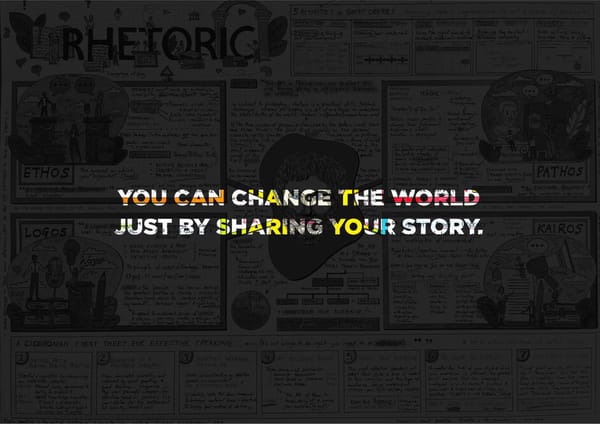The Art of the ONE Pager
By Jeremey Connell-Waite
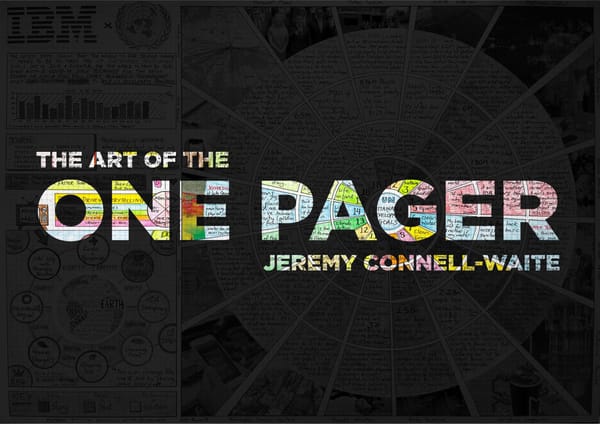
I don’t write things down to remember them later, I write things down to remember them now.
Hello, my name is Jeremy… My first school was Light Oaks Primary in Salford, near Manchester in the North of England Today, all of those world’s have collided. I work for the largest computing company in the and I loved it. I remember 1977 with fond memories. I was 5 years old and the highlight of world and I spend my days trying to understand how stories work by taking them to pieces. each week was receiving the Mr. Chatterbox badge from my teacher Mrs. Dodd. I wore my The stories I work on may have more to do with AI, quantum computing or the climate badge with pride and saw it as a badge of honour. crisis than they have to do with snakes, but my obsession with story hasn’t faded. I don’t need to sneak into the back of lectures with famous authors anymore, but I haven't Mrs. Dodd did not. stopped trying to figure out why some stories work and some don’t. And when a famous astronaut taught me the concept of accelerated learning by putting all my thoughts onto Apparently, I was pretty disruptive as a child because I wouldn’t stop talking during class. I one big sheet of paper, I knew that one pagers were always destined to be my thing. was supposed to wear the badge as a sign of my punishment, even though my only misdemeanour was asking “Why?” more than the average child. I just wanted to know the This book is a short collection of my one pagers, based on a few of the stories that I’ve background to every story that Mrs. Dodd read to us in “story corner” each day. Forty three enjoyed taking to pieces and some of the things I’ve learned from deconstructing them. years later and not much has changed… So here we are. Each of these one pagers were done in one sitting. In one draft. With no I’m still disruptive. edits. In about 4 hours. Usually with very little planning. And often with my 4 year old twins I still want to know why stories work. Petra and Mathilda helping me to colour them in. Many of them are not neat, mostly The only difference is that today I get rewarded for talking too much. because I never intended to publish them, so please just take them at face value. I always (I don’t get a badge but my pocket money is better). think it’s fun too look through other people’s notebooks, so maybe you’ll enjoy flicking through mine. I hope you enjoy looking through them as much as I have enjoyed creating When I was growing up my friends took computers to pieces to see how they worked. I was them. Maybe they’ll encouraging you to create your own one pagers, but even more, I always fascinated with PC’s from the moment I received a Commodore VIC 20 for Christmas hope that they inspire you to become more obsessed with stories and how they work. in 1981. I enjoyed writing games for my computer with a copy of PC World and Bill Gates’ BASIC programming language, but unlike my friends I wasn’t as interested in studying it’s Because after all, I believe that we really can change the world just by sharing our stories… circuits. While my friends were dreaming about processors, gates and memory expansion packs for their ZX Spectrum’s and BBC Model B’s, I was writing stories about snakes! I remember being particularly proud of a series of adventures about an Emerald Boa Constrictor called Emma. At the weekends my friends would go to computer clubs and steal the newest games from our local WH Smith, but I was guilty of a different crime. I spent my weekends sneaking into my grandad’s writing seminars, where his publishing company was teaching aspiring authors how to write short stories and get published. In the 1980’s I worked at my dad’s printing company to earn some extra cash during the school holidays. This was where I discovered the joys of SRA2-sized paper. Much larger than anything I’d ever been allowed to draw on in school, these industrial sized sheets of paper for the printing presses were over 2 feet long! (640 x 450 mm). I loved having huge sheets of paper to draw on because they allowed my imagination run wild and not be contained within the limitations of an A4 sheet or a small notebook.
I think with my pen.
Whoever tells the best stories goes home with the most marbles.
Tell stories that matter. I don’t think we have enough fun at work. I always had lots of fun at school. Maybe that’s why I still enjoy learning new things so much. But as you progress through your professional career, the projects become bigger, the executives become more senior and the stakes get higher. Somewherealongthewaythingsbecomelessfun. I never really wanted to grow up. I wanted all the perks of being an adult (money to spend on anything I liked and a fridge full of whatever I wanted were my top two priorities), but I didn’t want to become one of those serious people who stopped having fun. Maybe that’s one reason why I do one pagers and why I enjoy them so much? I love the challenge of sitting down in front of a blank sheet of paper when it’s just staring back at me saying, “OK, let’s see what you’ve got.” I love not knowing where I’m going to end up. I love the idea of creating something original that the world hasn’t seen before. But most of all, I think I love the childlike peace and joy of drawing and colouring in while I learn. No matter how amazing the Apple pencil maybe,digital will never replace the organic feeling of paper and pencils. They’re even made from trees. It doesn’t get more zen than that! Here’s to building business, changing the world and having more fun… We can build a business, change the world and have fun.
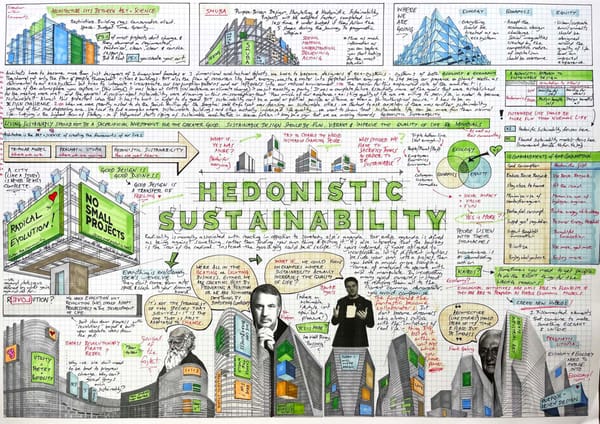
Anastronaut taught me how to do one pagers… If you’re anything like me, you spend most of your time focusing on the things that you’re good at and enjoy doing, and less time on the things that you’re not so excited about. If you’re an astronaut about to embark on a mission to the International Space Station though, you don’t have that luxury. Commander Chris Hadfield is the best test pilot that NASA has ever had on the astronaut training programme. He’s a test pilot for over 70 different types of aircraft and has been the voice of mission control for 25 space shuttle missions. He was Chief of International Space Station Operations from 2006-2008 after spending 146 days in space where he completed 2,336 orbits of the earth. But being good at flying fast planes won’t get you very far on the space station if somebody loses a finger. Or if you need to reboot (and recode) a computer. Or do a space walk to fix a problem with a tool you haven’t used before. Or if you need to communicate with the Russian prime minister. In Russian. These are all things you’ve never done before which will push you far outside of your comfort zone. Question: How do you learn to do all these things (and more) in less than six months? Answer: One pagers. One pagers helped Commander Hadfield learn many new skills in an accelerated time period, by focusing only on the things that mattered most to him in that critical moment. By only concerning himself with the direct “interface” he would be faced with, he created one pagers as learning devices that would trigger his mind to only remember the things that he needed to know about. From the moment I saw his one pagers, I knew that they could also help me in my mission critical environments. I may not need to solve a problem “in one breath” but I am often under pressure to deliver messages to an executive audience where millions of dollars or thousands of jobs could be impacted. What you will find in this book is a snapshot of the one pagers I’ve created. Some were created for my work at IBM, others simply to learn new skills or understand what made a particular speech so great. Many of them are not pretty. Some of them are almost illegible! But they have all made a huge difference to me and helped me in my personal and professional life. I hope that in some small way they help to inspire you as well.
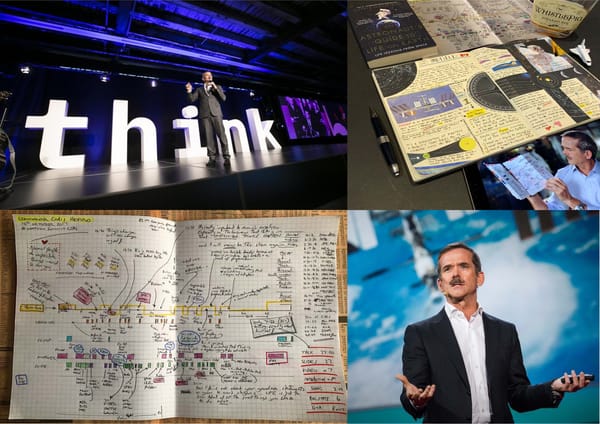
8 Daily Habits for Artists ~ 1 ~ Create Something Every Day It doesn’t matter how small it is. One picture. One quote. One sentence. Just get in the habit of finding the time and head space to bring something new into the world every day. ~ 2 ~ Sit Alone; Sit Quietly Without any technology. Or at least with all your notifications turned off. Get your favourite drink. Alcohol is allowed but if you’re going to write drunk, follow the advice of Ernest Hemingway and edit sober. ~ 3 ~ Never Stop Learning Learn something new without any apparent practical benefit. I’ve written one pagers about poetry and discovered that some of the best “stories” have no structure whatsoever. I love ballet. I recently studied the psychology of these “artists and athletes” in the hope of understanding how they turn their presentations into performances. What I actually discovered was a greater understanding of how ballet dancers tell stories without words. ~ 4 ~ Encourage Other Artists Being an artist can be lonely. It also takes a little arrogance to invest time in yourself and believe that your creativity might make a difference. Sometimes you need to stare at clouds. Not everyone understands this, so surround yourself with a few good people who do.
~ 5 ~ Teach to Make Change Apart from being incredibly rewarding, teaching is the best way to understand something properly (because it forces you to be able to explain it simply). Teaching also pushes your boundaries by creating spaces where people can challenge and inspire you. ~ 6 ~ Ship Something You Created Sometimes 80% good is good enough. Create something. Release it into the wild. See if it survives. Yes, it’s uncomfortable. Yes, you’ll feel vulnerable and exposed. Artists like their stuff to be perfect. But commercial artists can’t afford to waste time and effort working on that additional 20%. Especially if the market doesn’t respond well by the time you finally release it. “Real artists ship”. ~ 7 ~ Ask For Feedback Ignore the crowd. Listen to the people whose work you love, admire and respect. Take their feedback on board and try not to be too precious about taking their advice. It’s just their opinion. But artists are like athletes in many ways. We need great coaches around us to push us harder and make us that 1% better. ~ 8 ~ Have Fun Building businesses and changing the world is hard work, so if it’s not fun it’s probably not sustainable. This doesn’t mean everything needs to be fun, but I look up to artists like Tom Ford who say, “If it’s not fun I don’t want to do it”. People like Tom have found what works for them and an audience who like what they create, so they ruthlessly stick to it. Creating a cheaper perfume might make sense in the short term, but it also opens up a whole new market that someone like Tom wouldn’t find fun. And that will affect his other (art)work too. Not to mention the value of his brand. Be proud of all the things you DON’T do.
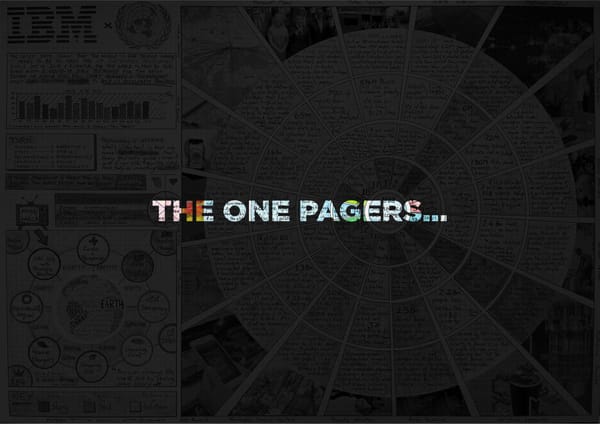
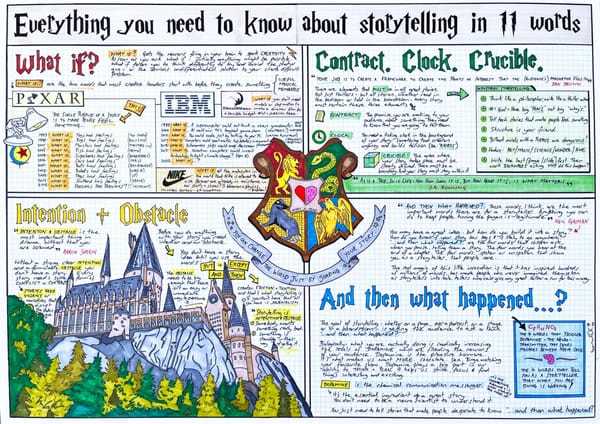
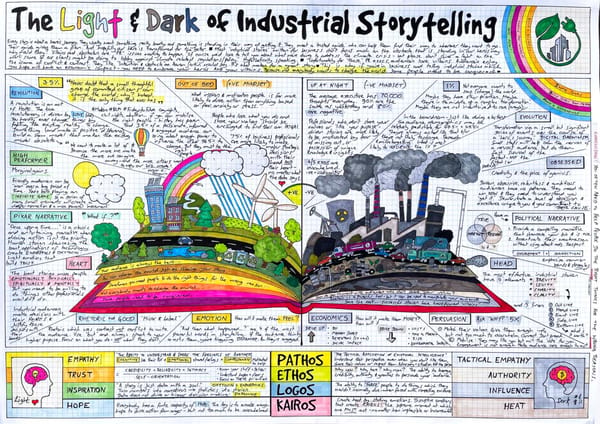


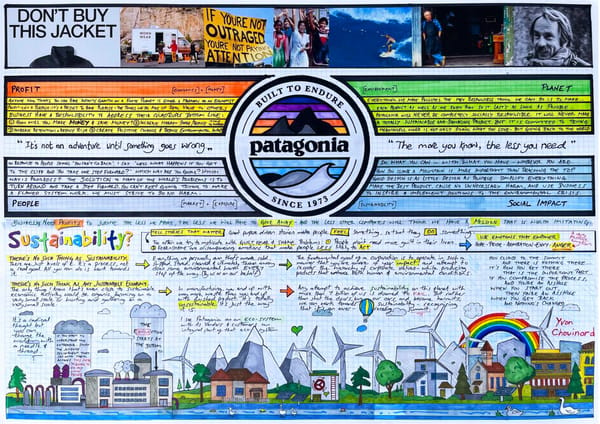
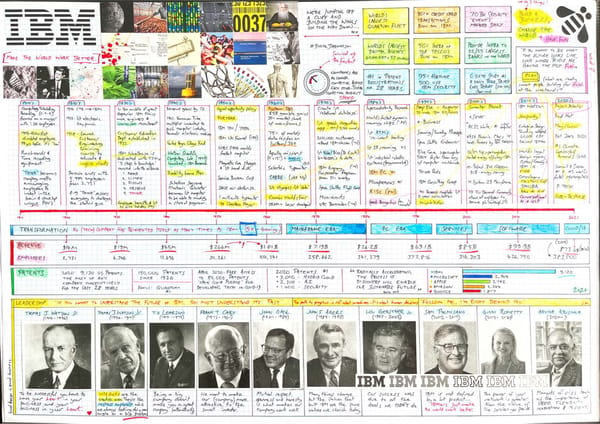
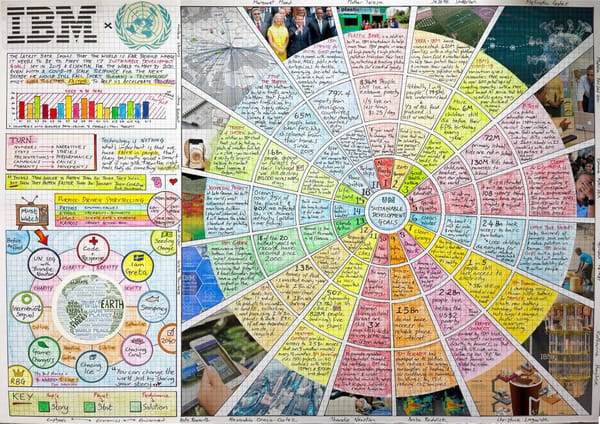
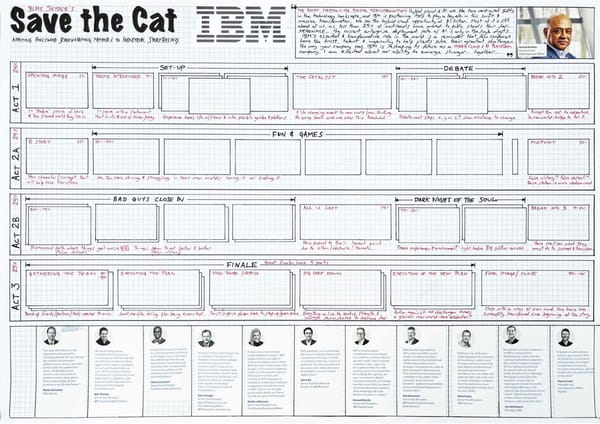
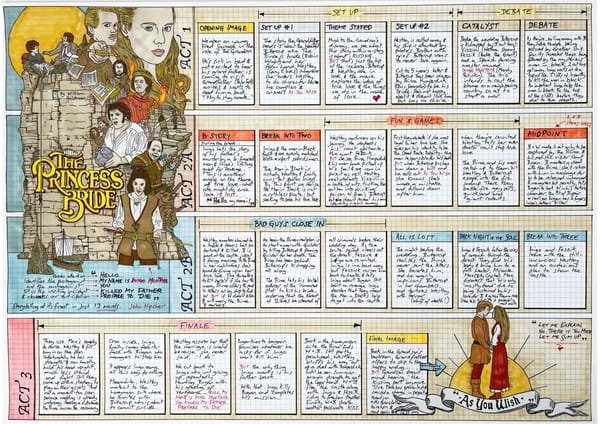
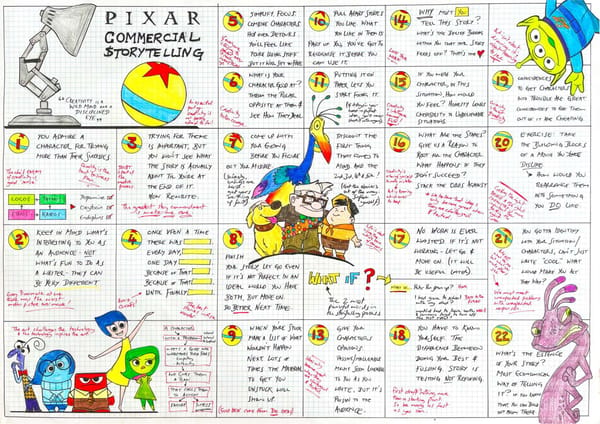
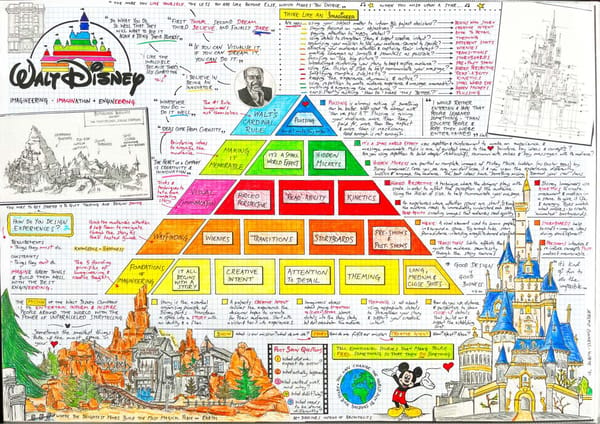
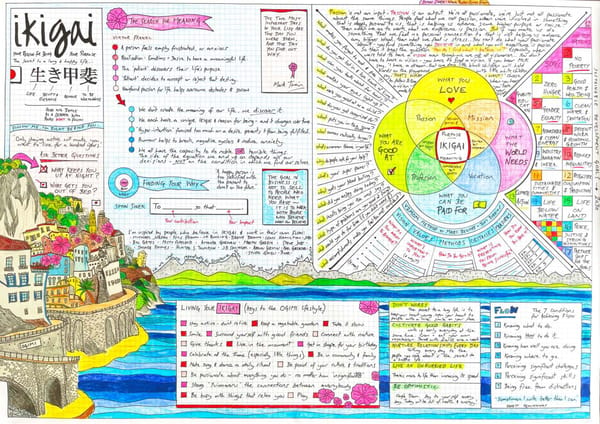
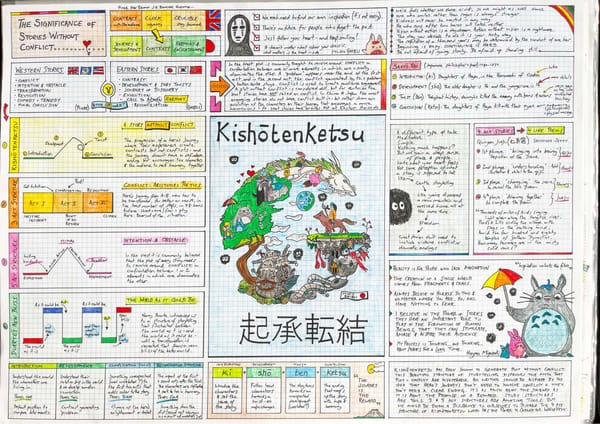
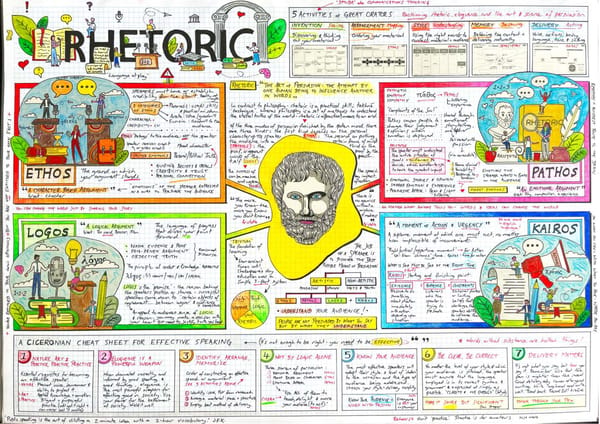
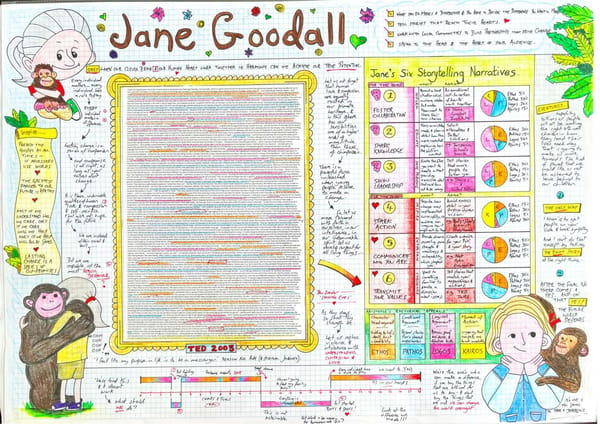

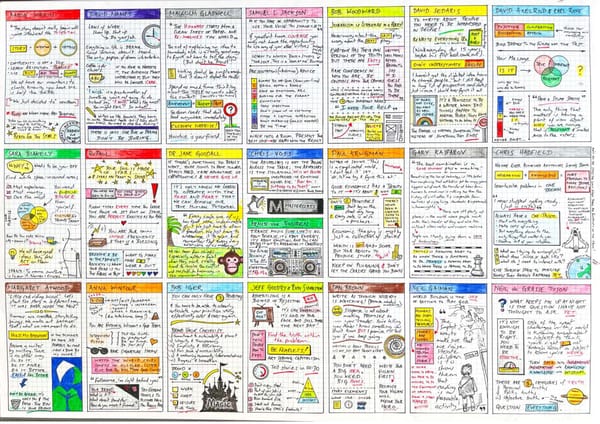

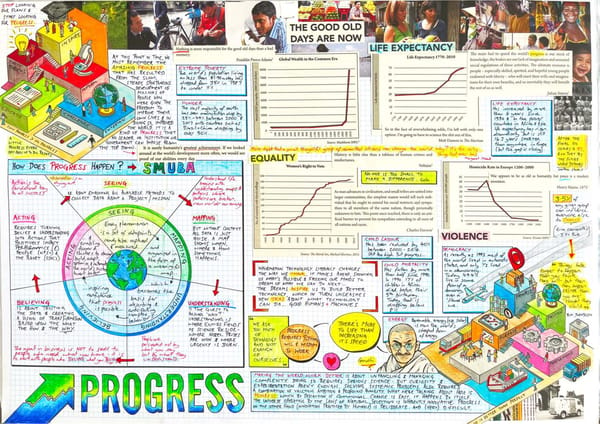
The Gettysburg address is the perfect speech. MLK’s dream speech is up there, but what President Lincoln managed to do in 10 sentences with just 272 words was nothing short of genius. When great speechwriters like Ted Sorensen say brevity is the most important element of any speech (keep it short), they’re usually thinking about The Gettysburg address. Why take 20 minutes or more if you can get the job done in 2?

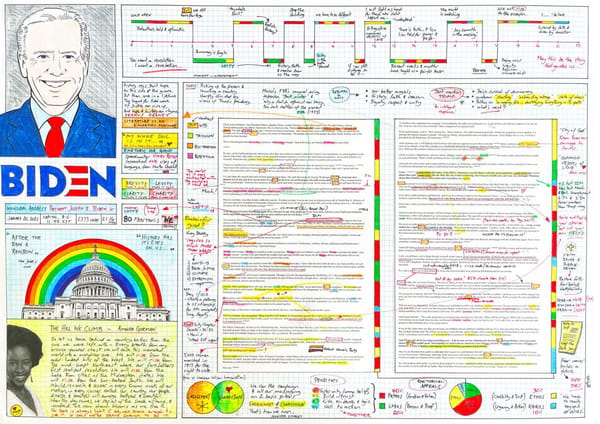
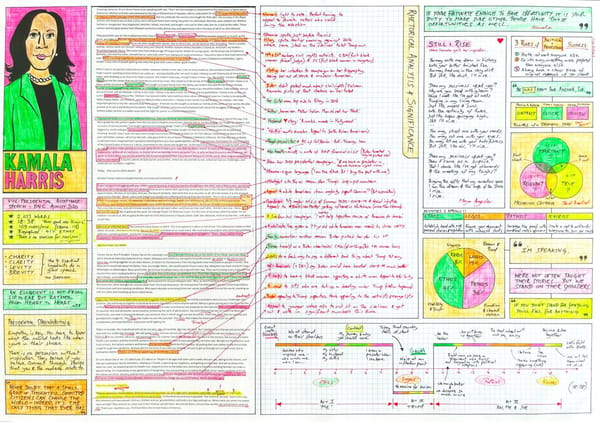
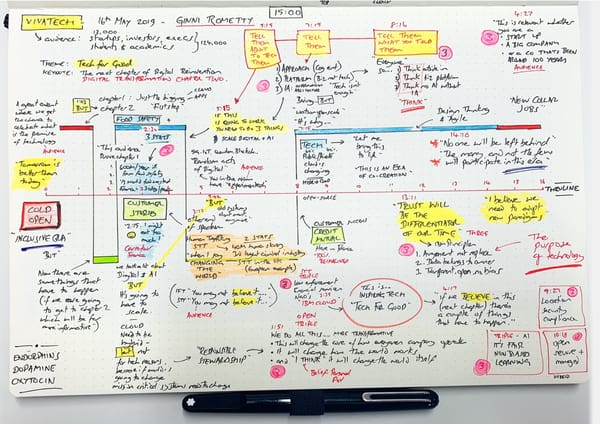
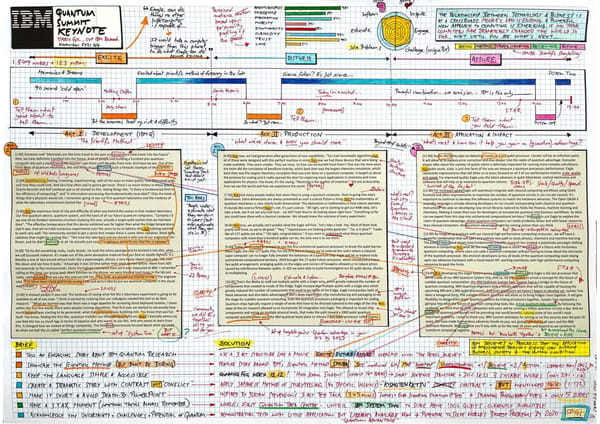
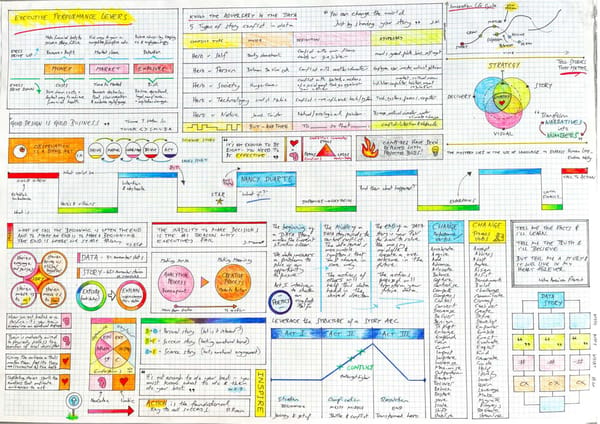
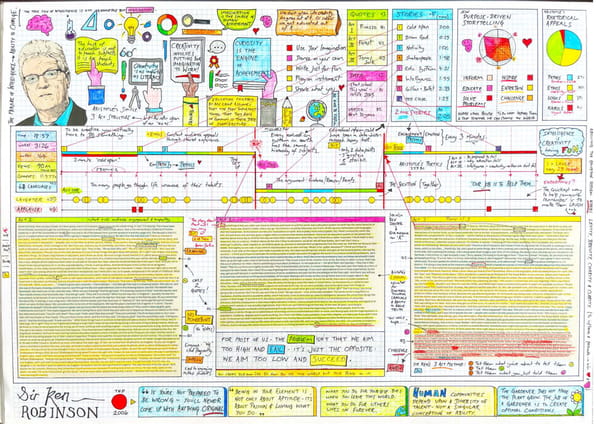
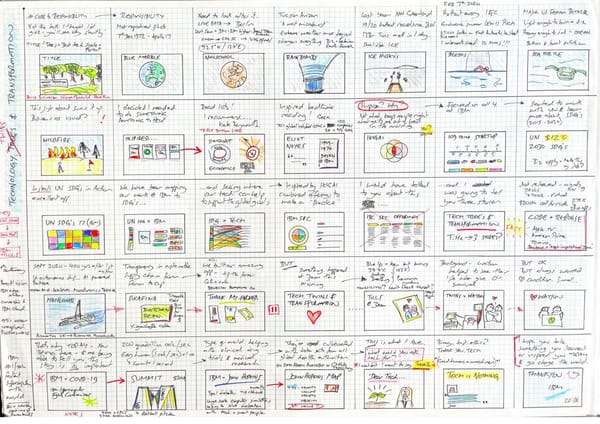
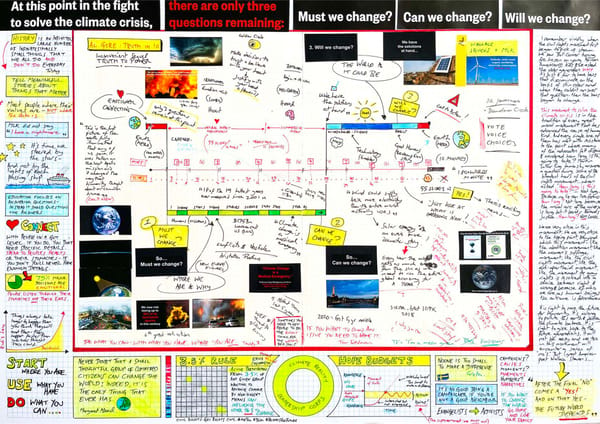

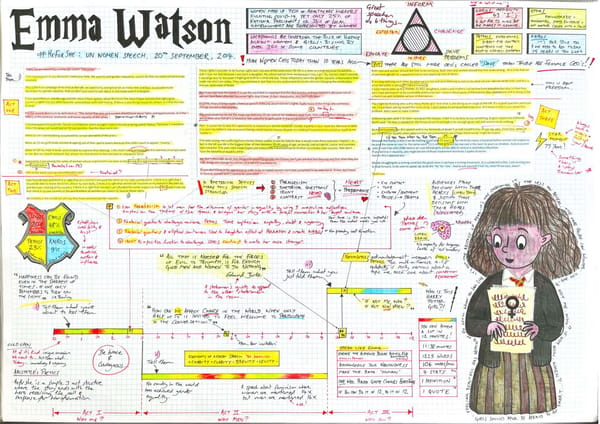


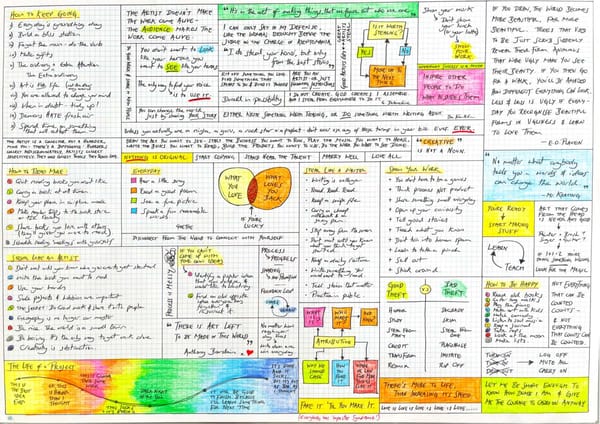

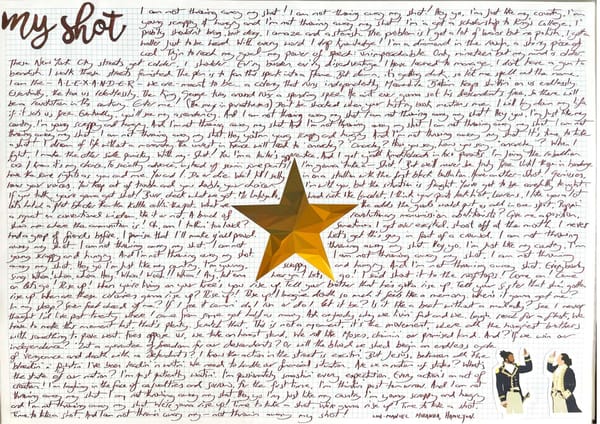
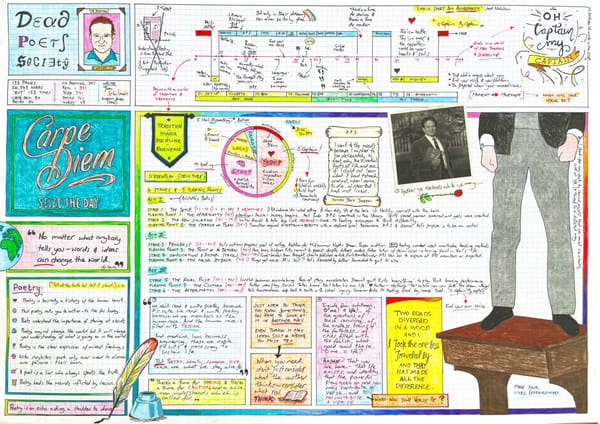
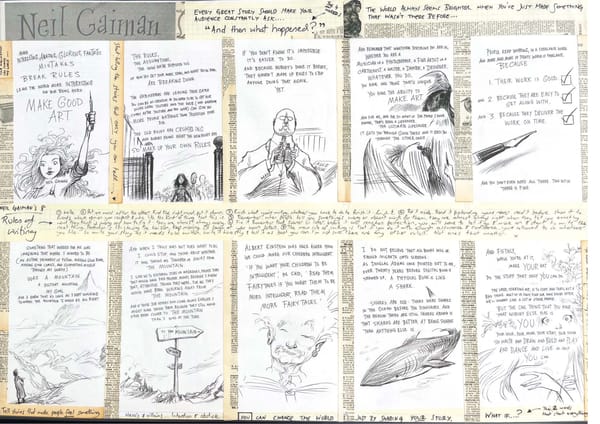
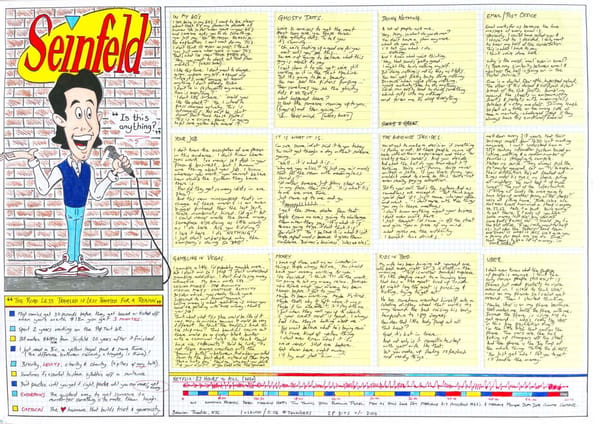
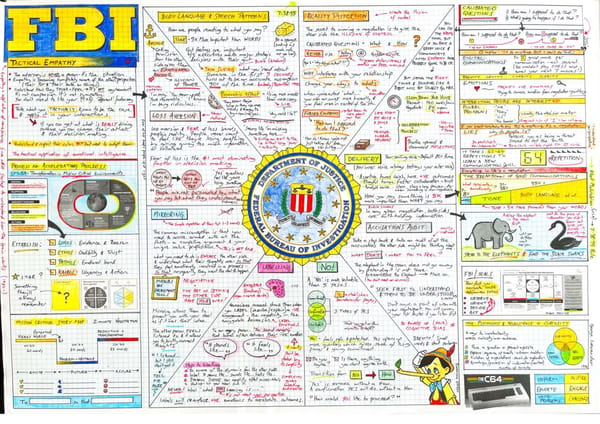
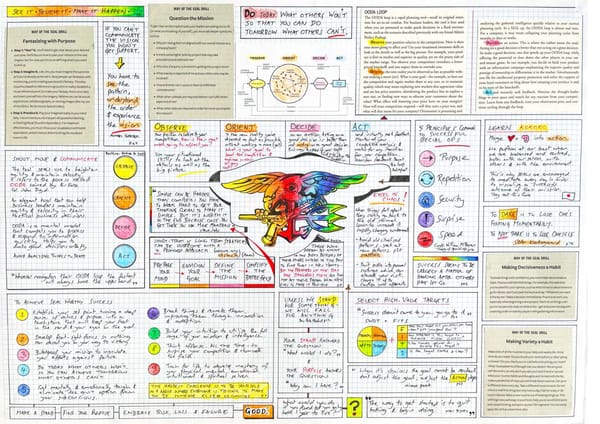
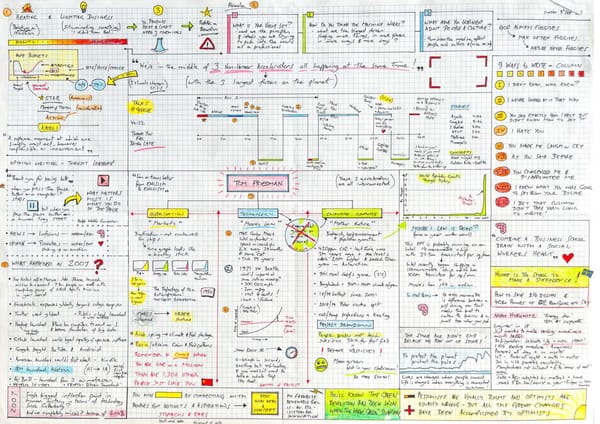
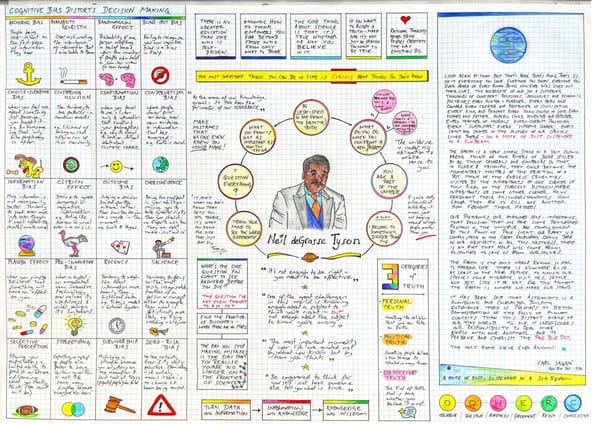
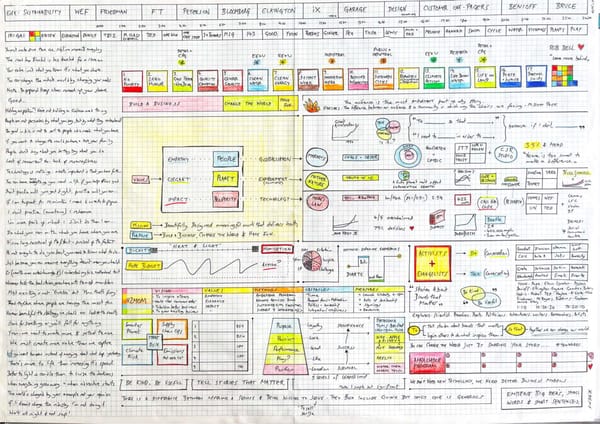
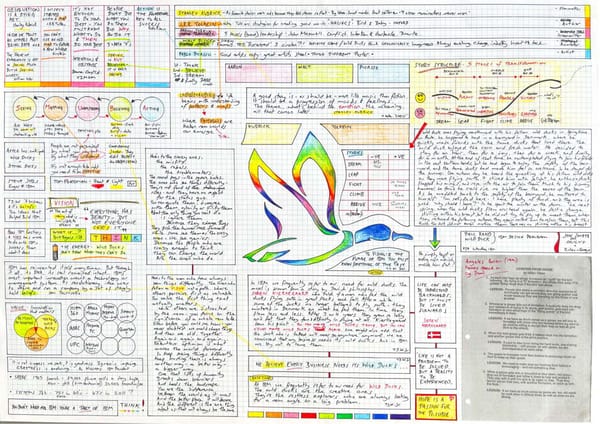
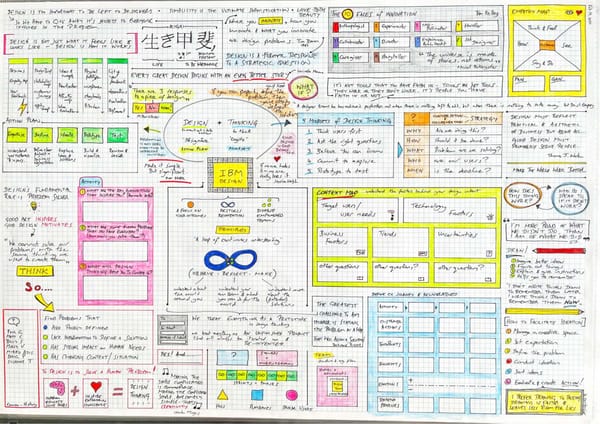
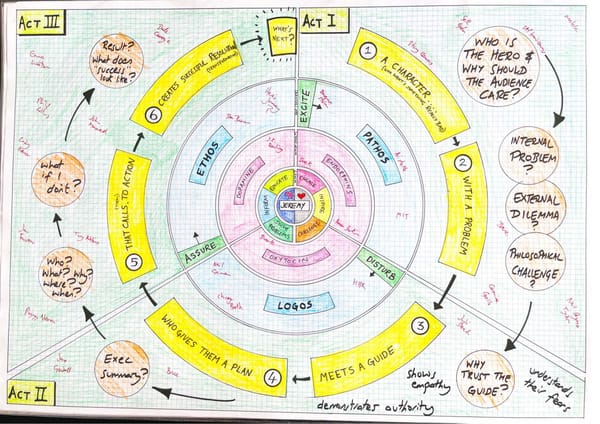
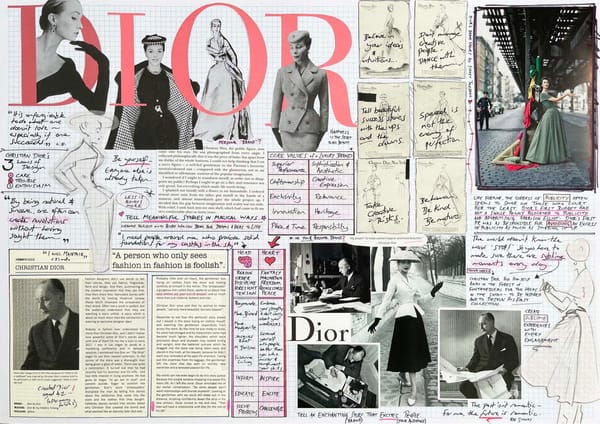
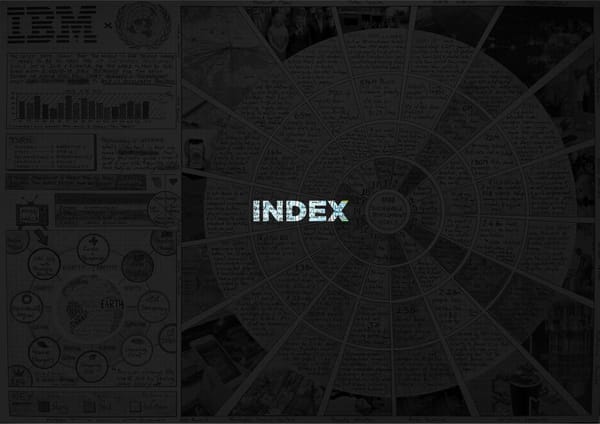
Howdoyoutellstories that matter? Well who better to turn to for inspiration “If you want to know something of the future, you need to know something of Do you ever struggle to learn new things or to remember important stories I spend a lot of time teaching creative writing and the art of storytelling. No than Anthony Bourdain? He’s up there as one of my favourite storytellers, not the past”. That’s what IBM CEO Thomas J. Watson Jr. once said. and statistics? The company I work for has a LOT of stories and I don’t know storytelling curriculum would ever be complete without a module on Pixar. to mention one of my all-time favourite humans. And he’s certainly one of my many of them. But they’re important to learn to have up my sleeve for when These rules have done the rounds many times, but despite being a little all-time fantasy dinner party guests. He called himself the “lucky cook” who I work for the 110-year old start-up that Watson Junior’s dad founded and for I’ve faced with a problem that we may have solved before. One pagers help cliché, there is still no better exercise for trying to craft a story than breaking travelled the world and shared meals with strangers in order to understand this one pager I was trying to figure out what mades the company special. To me to learn new stories and keep them as a visual record to have on hand it down quickly into Pixar’s “Once upon a time….” formulaic structure. their world and tell their stories. say "it's the people" might be true, but that doesn't shed much light on what whenever I might need them. makes IBM different from any other company. So I went on a digital I often feature Pixar's 22 Rules of Storytelling in my lectures. Urban-legend “I don’t have to agree with you to like or respect you”. archaeology trip into IBM’s archives dating back to 1911 in the hope of finding I think through my pen” has it that even Steve Jobs most memorable “one more thing” keynotes One of my writing hero’s Ted Sorensen used to say, “ someanswers. and I think that’s a pretty good philosophy. I don’t write things down to were modelled on this format. If you examine Jobs’ iconic iPhone launch Wisewords. remember them later, I write things down to remember them now. Digital address in 2007 closely enough, you’ll discover that follows the hero’s I discovered two things. 1. Transformation is messy. IBM has completely re- doesn’t work for me. It has to be a pen and colouring sticks. It feels more journey structure of Finding Nemo – the most popular DVD release of all- In a world greatly lacking in empathy, I wasted a few happy hours drawing invented itself 5X over the last 60 years and struggled each time. (Just human. It also slows my brain down, which for someone with ADHD is no bad time. Pixar have some good rules here that are worth memorising. They’re not this and watching “Parts Unknown” while being inspired by the words of my because a company is big doesn't mean that it's great). 2. Pretty much thing. for everyone, and of course they don’t always apply, but like any good rules – favourite wandering storyteller. I drew this one pager during the COVID-19 everything IBM has ever done focuses on a unique triple bottom line: Build a you need to know what they are before you break them. That’s why I lockdown when we couldn’t go out to eat in restaurants and it reminded me Business / Change the World / Have Fun. FUN? Many of IBMs major tech For this one pager I was also prepping for work IBM was doing around the regularly write them down to remind myself what they are. Unfortunately in how much we take for granted every restaurant of every nationality in our advancements came from researchers and engineers having fun! Playing United Nations Sustainable Development Goals. I found a lot of data I couldn’t my B2B world, attention spans are 75 seconds NOT the 75 minutes of the towns and cities. Not to mention how we should all travel more. Especially to Checkers in the 60's spawned a new computing system. Beating a grandmaster afford to get wrong and some great stories which would help bring those average Pixar movie but still, the objective is still the same - to tell stories those parts we don’t know. at chess in the 90's gave birth to advanced analytics. Winning TV's toughest heavy statistics to life. that make people FEEL something.... gameshowhelpedbuildanAIthatadvancedoncology. Competing live against I love A.B. so much. Greatly missed. x world champion debaters refined IBMs conversational AI. The technology that features in each of these stories is incredibly impressive, Myfavourite rule? 14. but I’ll stick with my old school pen when it comes to trying to learn them! Conclusion? If you want to see where the future is going, look where people Why MUST you tell this story in particular? What’s the belief burning within are having the most fun. youthat your story feeds off? That’s the heart of it. Disney Imagineering has provided the creative energy that has driven Disney Consultants love to ask "What keeps you up at night?" - but surely a much Why are we so obsessed with the need for stories to have CONFLICT in the Storytelling is one of those things that seems really easy when you don't for over 69 years. Combining IMAGINation + enginEERING the Imagineers better question is "What gets you out of bed in the morning?” Western world? Many Eastern stories FEEL different because they use the know how to do it properly, but REALLY difficult when you do. In 335BC mission is to “create unique experiences that entertain, inform and inspire storytelling technique of "Kishōtenketsu". Aristotle (The Greek god of Storytelling) wrote a paper about how to speak people around the world through the power of unparalleled storytelling". In 2021, over 70% of business professionals are experiencing some form of persuasively, how to present and how to tell stories that matter, called 'The stress or anxiety and 84% of the working population are "concerned" about It's one of the only storytelling structures that doesn't include conflict and Art of Rhetoric'. Unfortunately, rhetoric (especially rhetoric for good) seems contrast. The focus is more on the journey and the d- I have been studying “The Imagineering Toolbox" books recently by the losing their jobs. (Edelman Trust Barometer 2021) relies more upon to have become a lost art. Not only are stories regularly told today in soun brilliant Lou Prosperi. I discovered that behind the magical experiences that development of the characters, rather than a dramatic ending, where the hero bites and hashtags, but they often lack eloquence and the correct grammar. Imagineer’s create for their guests is a simple process for delivering So instead of "solving problems" by focusing on that stress and anxiety as is transformed for the better (or worse). knowledge and happiness”. It’s called “The Imagineering Pyramid” and is a “ leverage to sell more stuff, I have chosen to focus the communications But the great stories are usually great because they follow the rules and model that I think that could inspire us all to be better. leadership programme I run at IBM on the Japanese concept of Ikigai. Kishotenketsu is the structure of a 4-part story (in the West we mostly use 3 rhetorical appeals that Aristotle established over two thousand years ago. Unsurprisingly, helping executives to find more meaning and purpose in their or 5 part stories): Walt Disney wanted to be the best at everything. “I like the impossible work makes them happier and MUCH more productive. The things that you're Ethos. Pathos. Logos. because there's less competition" he once said. He believed in the power of GOOD AT and the things that you get PAID FOR, should not be separate • "Ki": Introduction innovation and always wanted to do things that others hadn’t done before. from the things you LOVE and the things that the WORLD NEEDS. All too • "shō": Development Andif you need people to act with a sense of urgency (especially if you need This is why at the top of the Imagineering Pyramid is “Plussing" - the one often, we just view this as our professional life OR our personal life. • "ten": Twist (a contrast NOT a conflict) to close and deal or encourage people to join your cause or campaign), then question Walt used to ask of every Imagineer on every project: • "ketsu": Conclusion youalso need a fourth - Kairos. In business we love to ask people to find their “Why?" We should really be “This is great. But how do we make it BETTER?" helping each to other discover our ikigai... Western stories revolve around drama, tragedy, conflict and obstacle. The I believe that all business stories MUST have each of these four elements in *Note that I used Marc Benioff’s V2MOM framework for breaking down my ending of Kishōtenketsu stories are less conclusive and end with the someformtobeeffective. characters reflecting on their journey together and exploring ways to live in purpose within the confines of my job. Google “V2MOM”. You won’t regret it. harmony. After the last few years (#MeToo #BLM #Trump #COVID19) we I've been studying Aristotle's rhetorical appeals in depth for the last month could certainly all do with a bit less conflict and a bit more peace and and this one pager contains some of the highlights. Maybe it will serve as a harmony… helpful reminder of what to include in your talk the next time you need to "persuade" an audience.
“Only when our clever brain and our human heart work together in harmony This was one of the first one pagers I ever did. I was ill for a couple of days Masterclass.com is still my favourite learning resource. I still do one new For this one pager I analysed Mother Teresa’s Nobel Prize acceptance speech can we achieve our true potential.” and took some time to review a few of my favourite leaders to see what I lesson (or revisit an old one) everyday - and have done ever since the day the for some writing I was doing around the United Nation’s sustainable could steal from them to help me at work. At the time it seemed a little th 2015. platform launched with Kevin’s Spacey’s acting Masterclass on May 12 development goals. I was focusing on SDG #1 “No Poverty” and wanted to I was studying Aristotle's 'appeals’ for this one pager and trying to excessive but I discovered that there was something special about taking understand what made Mother Teresa such a compelling and compassionate understand why activists and evangelists like Jane Goodall are such notes on an A2 pad (59cm x 42cm) that gave my thoughts and ideas space MyTop10Masterclasses: speaker. It’s easy to be inspired by her grace and and positive energy, but compelling speakers. I discovered (in the small pie charts) that she uses six to breathe! I wanted to look at great communicators to become a better after some deep-dives into her talks and evangelism, I was mostly inspired by specific narratives, each one tailored for a different audience. If she wants to communicator myself, so I gave myself 9 inspirational business people to her powerful but accessible perspective. ‘foster collaboration’ for example, she delivers a more emotionally charged focus on. After a long debate with myself I narrowed my list down to Simon 1. Neil deGrasse Tyson (Science Communication) pathos). ‘Sharing knowledge’ for a schools talk in Tanzania requires 2. AaronSorkin (West Wing is my all-time favourite TV show.) speech ( Sinek, Nancy Duarte, Carmine Gallo, Seth Godin, Tony Robbins, Tom Peters, I often suggest to business leaders that their main objectives should be to more logic ( logos). When she is demonstrating ‘leadership’ she shares more 3. Neil Gaiman (Creative Writing) not necessarily in that Dale Carnegie, John C. Maxwell and Zig Ziglar. build a business, change the world and have fun but “ ethos) and if she wants to ‘spark action’ and get How easy for me to say that though, when I’m spending time with of her personal credibility ( 4. Malcolm Gladwell (Non-Fiction Writing) order!” kairos). my thinking was people to DO things, then the talk is focused more around action ( One curious outcome was that I soon realised how much of 5. JaneGoodall (Conservation) large enterprises and executives who are responsible for thousands of people influenced by middle class white guys, so I made it my mission to study all 6. David Axelrod (Obama’s Chief Political Strategist) and billions of pounds. Of course they could change the world. If they wanted By changing the levels of ‘Ethos' (credibility & authority), ‘Logos' (reason & the amazing women who must have some how passed me by. If you’ve ever 7. Chris Hadfield (Space Exploration) to. I have an interesting view of the world but it’s a perspective not shared by proof), ‘Pathos' (values & emotion) and ‘Kairos’ (urgent action) she is able to seen me on a Webex or zoom call with my hero-wall of pictures behind me, 8. David Mamet (Dramatic Writing) many. That’s why I love Mother Teresa’s world view which doesn’t rely on makesurethateverymessage resonates with each audience. you will notice that I am usually now ONLY surrounded by badass world- 9. RuPaul (Self-Expression) having a big influence, a lot of money, a high-ranking corporate job or a changing women. That’s not to be politically correct. That’s because I’ve since 10. Robin Arzón (Mental Strength) media profile before you can make a real difference... Jane is one of my favourite people who sees her career as a "calling”. I have beeninspired by SO many women, in many ways I didn’t expect, as a result of her picture in my office because she’s still doing what she loves and going creating this one pager. If you can find the time I highly recommend doing No. According to Mother Teresa, anybody can change the world. It just strong at 86! She inspires me to make a difference, and to make sure that I this for yourself. The world moves so fast we don't often give ourselves dependsonhowyoudefine“theworld” will always have a job where work doesn't always feel like "work"... enoughtimetobeinspired. “ If you really want to change the world, go home and love your family”. Great advice. I’m not arguing with a saint. I wonder if we spent more time celebrating all the good things we’ve done, JFK's speechwriter Ted Sorensen said that the best speeches come down to WhenJoeBiden's speech writer Vinay Reddy sat down to write Biden’s 2021 Vice president elect Kamala Harris knows how to present her CV without rather than constantly focusing on all the bad things that are wrong with the 4 words (levity, brevity, charity, clarity) and 5 lines (an outline, headline, inaugural address, he knew a different kind of speech was required. Driven by appearing too arrogant or self-promotional. It's a tough skill that we all need world, would we actually get more done? Would a more positive state of frontline, side line and bottom line). the idea of using "rhetoric for good" he studied a wide range of powerful to learn for those times when we need to talk about ourself. mind accelerate PROGRESS - for the planet and for each other? Yes, there is speeches (including most of what Winston Churchill delivered publicly), much to do. The UN sustainable development goals are pitifully far behind As President-elect Biden prepared to make his inaugural address on the 60th where words had been used in a positive content to unite people. You need to build credibility and trust, but not over-sell. Don’t try to hard. where they should be. But humans have also achieved some pretty amazing anniversary of JFK's "Ask not" speech, I created this one pager as I studied Don’t be too cliché. Don’t preach. Paint a vision, but don't make it feel out of things over the last few decades. whatmadeJFK’sspeechsogreat. The speech that President Biden delivered exceeded expectations, and when reach. Show leadership, but come across like you’re one of us. It's a tough you analyse it closely as I did in this one pager, it's not hard to see why it balancing act. For Kamal’s vice-presidential acceptance speech in August • World hunger has dropped by half in the majority of the world since 2000. JFK asked Sorensen for brevity, asking him to use short clauses and short worked. 2020, despite the majority of her 18 minute talk being about herself, she I don't want people to think • Just 28 years ago the majority of the world lived in autocratic states words wherever possible, telling Ted Sorensen “ spoke with empathy, elegance and humility. • Today 49.3% enjoy some form of democracy. I'm a wind-bag.” Instead of just using clever rhetorical devices and the kind of 'conflict' you • Renewable energy is now the cheapest form of energy. usually expect to find in political speeches ("great speech but I can't "You can change the world just by sharing your story". Winning the popular vote by one of the smallest ever margins (0.17%), his remember what he said"), Vinay used “but" 15 times to create subtle And have you ever wondered how progress happens? How systemic change approval rating soared to 78% after he delivered this speech. It's arguably contrasts and then "we" 80 times to appeal to civic 'unity' (the theme of the Using many of the rhetorical devices that made Obama a great speaker, actually occurs? Scientists have a word for it. “SMUBA”. oneofthegreatest speeches ever given. speech). Kamala specifically chose words and phrases that carried weight and hidden meaning, in order to relate to different demographics within her TV audience Seeing. Mapping. Understanding. Believing. Acting. (All systemic change goes When Sorensen was later asked by students for advice on giving a great It's still fair to say that on the day, 22-year old poet laureate Amanda Gorman of 22.8M. through these 5 stages). speech, he simply replied "If you don't have mighty thoughts, you won't stole the show with her 'The Hill We Climb’, poem but nevertheless, that cold makemightyspeeches". Wednesday in Washington DC was a shining example of how words and Wemaynotberunning for high office, but we can learn a lot from her about So the next time you find yourself on a mission to make the world work ideas really can change a nation. howtopromoteourselveswithstrengthandquietconfidence. better: Think positively. Use ‘SMUBA’. And remember the words of the great economist Rudi Dornbusch who said, “Things usually take longer to happen than you think they will, but then they happen faster than you ever thought they could”.
Some made us laugh. A few made me cry. And there were long pauses with a black screen after each section to bring the attention back onto him and his message. It was a masterclass in the art and science of presenting. These are the notes I took after the training for ‘Truth in 10’. This is the part where Al Gore trains climate leaders to deliver their own version of that epic slideshow in 10 minutes. He has a very unique style that creates drama and tension. I’ve added my own transition notes which are also colour coded for pauses // and the types of emotions that I want the audience to feel. • 10 minutes. • 55 “wallpaper” slides per deck • Script: 180 words per min • Slide transitions av. 11 secs No industrial storyteller has inspired or taught me more than Nancy Duarte. In 2006 Sir Ken Robinson delivered the most popular TED Talk of all-time This is a LOT of work for a 10-minute presentation! Her book Resonate was a revolution in the art and science of visual (90M+ views). I always wanted to understand WHY it was so good so I tried storytelling and the lightbulb moment that pushed me down my own path to figure it out. During the process of crafting this one pager I discovered that The BEST PRESENTATION I ever saw was 615 slides long. Roughly 100 hours in fact. towards purpose-driven storytelling. Her next book Illuminate with the the reason Sir Ken’s talk worked so well was that it followed some very basic wonderful Patti Sanchez built on Resonate and showed you how to turn rules that Aristotle wrote in 335BC. For me, it all boils down to 6 things we It took 2 hours 43 minutes to deliver, in one sitting, but it moments into movements, campaigns into causes and numbers into might all do well to remember the next time we need to give an important felt like 20 minutes. Most of the audience were on the edge Which is what the best TED speakers invest in their decks. narratives. Nancy’s most recent book Data Story by Nancy Duarte is one of presentation. (They're ALL important but #6 is my favourite). of their seats the whole time. This was Al Gore’s slideshow 10 hours per minute! Al Gore’s ‘Truth in 10’ breaks many of the best communications books I've read in recent years and I constantly refer to it when building presentations. 1. The 19-minute talk was broken down into a simple 3 act structure. i) Be for the Climate Reality Leadership Corps delivered in the rules of traditional presenting, but his objective is not prepared to fail - ii) Why education fails - iii) How to not fail in the future. Minneapolis in July 2019. What was even more curious just to teach people climate science, it’s to inspire them to Whenever anyone asks me for storytelling advice, my most regular response 2. Even though this was a serious academic talk about educational reform, about the training was that we were advised not to take ACT. And he’s spent so long working on his craft, that he’s is to watch Nancy’s TED talk and to read anything that she’s written. Sir Ken resisted the temptation to fill his talk with numbers. (He only used 2 stats in the entire talk). notes straight away, but to concentrate on how we FELT. learned exactly HOW to break the rules in order to make his I always wondered if “drawing” a book would be a good way to retain the 3. He made the audience laugh every 29 seconds. (As a professor he presentations memorable. information I read, so this one pager was my attempt to do just that. I didn’t understood that the quickest way to make someone remember As we watched the slides, heard the stories and studied the realise how cathartic it would be either once you get into the zone and just something is to make them laugh). focus on the text, so I highly encourage you to try it for yourself. It slows your 4. He told 8 stories averaging just 2 mins 5 seconds each. (Harvard's MBA science it was like watching a great conductor directing a The point of any story is to make people FEEL something. brain down, makes you think and helps you to remember what you read. All programme estimates this is roughly the attention span of the average symphony. The slides went fast then slow. Al Gore’s voice And the point of a purpose-driven story like this one about you need are some nice Blackwing pencils (other brands are available!), your executive). was direct and dramatic when he was talking about politics, the climate crisis, is to inspire people to DO something. favourite beverage (bourbon or Malbec works for me) and settle down 5. Sir Ken leveraged Aristotle's rhetorical appeals of persuasion: Pathos somewherequietwithanA2graphpadfromAmazonandyou'reoff.... (emotion & values), Logos (reason & proof), Ethos (personal credibility & but quiet and reflective when he was talking about the Something the Truth in 10 does well well. Over 20,000 have trust), Kairos (urgent action). planet or people. The slides were intense. been trained since the Truth in 10 was invented. 6. Hedidn't use PowerPoint. "Don't practice until you get it right, practice until you can never get it I love Malala Yousafzai. I loved her best-selling autobiography, published when GREATspeechesdo6thingswell. They Inform, educate, solve problems (for Finding 18 minutes to watch a great TED talk is one thing. Spending 18 hours wrong". she was just 16. What were you doing when you were 16? (I was chasing girls the head), inspire, entertain, challenge (for the heart). I recently studied to understand WHY it was so great takes things to an entirely different level. I and trying to earn some money for some Air Jordan III’s!) Malala was working Emma Watson's superb #HeForShe speech about feminism at the UN and analysed this talk from Josette Sheeran over a weekend when I was away and Sage advice from Tony Robbins that I heard at Dreamforce, the huge tech on her Nobel prize acceptance speech and campaigning for girls who don’t sawhowshedidall6in12shortminutes writing a leadership programme for social impact and purpose-driven conference hosted by Salesforce in 2015. It's a great line that seems more have access to education. The 2015 documentary “He Named Me Malala” is . storytelling. I didn’t know much about Josette Sheeran before I started this important today than ever. Presenting via Zoom or Webex is not easy, and outstanding. For this one pager I was working on a lecture to teach young • 1,225 words. one pager, but by the end of it she had completely inspired me. Most of my trying to transfer any kind of emotional feeling to your audience via the tiny activists and evangelists how to speak, write, campaign and communicate. It • 11:38, speaking slowly but deliberately (106 words/minute). notes here may not make sense to you, but I highly encourage you to check camera on your laptop is no easy task. I was constantly trying to put Tony’s seemed a fitting speech to be working on given that my 4-year old twins Petra • Telling short personal stories (to make an emotional connection with her out her wonderful TED talk. advice into practice for the virtual keynotes I was giving during 2021/21 about & Mathilda were starting "big" school the following day. I learned 2 things from audience). COVID-19, climate change and how tech can solve some of the world's meticulously studying Malala’s words, trying to understand what made it such a • Acknowledging her nervousness as a public speaker (vulnerable despite Even if my notes don’t make sense, my hope is that you become inspired in biggest problems. Turning up to a virtual keynote and winging it might tick a great speech. her fame). some small way to take your favourite stories to pieces and see how they boxandgetyouby.Butitwon’tmakeadifference.Preparationis everything. • 4stats (to make her case with evidence and reason). work. People who love cars may obsess about their favourite model, and 1. It's amazing how much you can learn from immersing yourself in a great • 1 definition (to ensure clarity). dream about getting under the hood to examine the engine and see what The problem with Webex is that it can be really dull. And your webinar speech just by drawing it. You gain a clearer understanding of what made it • 1 quote (to inspire). makes it special. In much the same way, I’d love to encourage you to become audience, just like with TV, are only 1 click away from being somewhere else, such a great speech so that you can learn to communicate better yourself. a better storyteller by deconstructing the words of someone who inspires so it’s essential that you’re even more engaging than you usually would be. 2. This particular speech was about a big number. 130 million girls around the youtounderstand what makes them tick. Audiences have a 75 second attention spans instead of the usual 3-6 minutes world still have no access to school. All the best speeches often have ONE Ahelpful reminder for all of us: Who needs 45 minutes on a Zoom call if you with a live audience. You need to tell better virtual stories, so I started to memorable stat or headline – something coaches like Nancy Duarte call a can get the job done in under 12? draw my slides instead of memorising them from 'Presenter View' and S.T.A.R moment. Something They’ll Always Remember. rehearsing in PowerPoint. I soon noticed how quickly I remembered the slides Notbadfor"that Harry Potter girl..." and was able to devote more energy on delivering the story. Trying to So, if like me you're a parent who now knows what it’s like to face that school- engage with that little green light on your laptop is hard! Presenting virtually gate meltdown, remember to take a deep breath and remind yourself that in is not easy and we're all suffering from screen-fatigue. It’s time to get out the scheme of things, just being able to send your kids to school to learn stuff your colouring pencils and tell more emotional better stories. andhavefun, we're pretty lucky.
"I don't write things down to remember them later I write things down to This one pager was an exercise in going back over my notes from Austin "I believe in the power of storytelling because stories open our hearts to a Have you ever wondered what it FEELS like to create a masterpiece? What rememberthemnow". Kleon's excellent pocket-books on creativity, to remind myself why new place, which opens our minds, which often leads to action". was going through Leonardo's mind as he was painting the Mona Lisa? How a writer who draws” so when I met commercial art matters. He calls himself “ did Shakespeare feel while he was writing Romeo & Juliet? Or John Lennon A highly emotive topic like climate change polarises people. It makes them him at SXSW in Austin a few years ago, I knew we would be BFF’s. His books This one pager came about when I was hosting a workshop on sustainability writing Imagine? Or what about J.K. Rowling as she was creating the world of upset. Some people take action. Some make irrational statements as they are packed full of great quotes, advice and anecdotes to help artists survive and social impact based upon Melinda's TED talk about how marketing can Harry Potter? It's a curious question isn't it? base their arguments on their cognitive biases, an incomplete understanding in the commercial world, and I’ve found that writing and re-writing them from change the world. It was fascinating to break down her talk. When journalists, of climate science or their political beliefs. Some get too emotional and 'lose' old notebooks like this helps me to never forget them. analysts or speech writers measure the value of a talk they break it down into Early in his career the great writer Hunter S. Thompson wondered the same their audience. Even some of the best activists and evangelists get caught (Aristotle's) 3 rhetorical elements of a narrative: PATHOS (emotion & values), thing. His answer was to type The Great Gatsby from beginning to end on his out by sharing the wrong facts and figures or having a memory-block when Afewofmyfavourites: LOGOS(reason&evidence)andETHOS(credibility &trust). battered typewriter, just to understand what it might have felt like to be F. they try to remember them. Scott Fitzgerald. At least for a moment. I thought this was a great idea, so I • Don't wait until you know who you are to get started. Unfortunately, most talks bypass the element that Aristotle didn't talk about copied arguably the best piece of theatrical writing of modern times: Lin When I needed to give a presentation about the climate crisis in • Write the book you want to read. very often – a fourth element I only discovered from creating some of the one Manuel Miranda's "My Shot" from the musical Hamilton. The writing is pure Westminster, I knew that I needed to get my story straight and I couldn’t • Side projects & hobbies are important. pagers in this book. KAIROS. Definition: Something that requires urgent genius. It took him two years to write it and every one of the 1,119 words is afford any mistakes (especially since the panel format didn’t allow me the • The Secret = Do good work and share it with people. action (no matter how implausible or inconvenient). Kairos is the essential perfectly positioned (for comparison the average song only has 300 words). luxury of somewhere to put my notes or an autocue to fall back on). To help • Geography is no longer our master. ingredient for any good professional talk? Especially one that requires the It's a wonderful exercise I encourage you to do if you have the time. metodothis, I wrote down all the quotes, stats and stories that I needed for • Be NICE. (The world is a small town). audience to do something. Whether you need a close a sale, influence a vote my talk (from carefully verified sources) and drew some pretty childish • Be BORING. (It's the only way to get work done). or capture a signature – no Kairos, no cigar. 1. Choose your favourite song, speech or story. pictures to help me remember them! This is the one-pager I ended up with. • Creativity is subtraction. 2. Copy it longhand with a sexy pen and a shiny new notebook (I wrote in Watch Melinda's talk to see if you can follow her flow and understand what brown ink with a fountain pen because that's what Walt Disney always Why not try it for something you're trying to learn? Or for your next madeitsogood. did). presentation? What do you have to lose? It's a fun process. And don't let any lack of artistic skills put you off. Any van that you draw can't be much worse • 50% Logos: Making a case for how marketing can save lives. Not only is this a fun way to pass the time, but you will you see it from a than mine! • 21% Ethos: Sharing her personal point of view to gain trust. different perspective, and it will radically improve your writing, speaking and • 24% Pathos: Making an emotional connection with the audience. storytelling skills. • 5% Kairos: Giving an urgent call to action. If you go to film school or take a qualification in screenwriting, at some point Neil Gaiman is an author, film-maker, poet and storytelling philosopher who Why is the world's most commercially successful comedian so successful? We all understand how important EMPATHY is in the workplace, but during your course, one of your exercises will be to watch your favourite puts the success of his writing down to four simple words. Jerry Seinfeld is worth almost $1Bn and still rakes in $40M+ from his TV show, sometimes what we actually need is “TACTICAL EMPATHY". It’s a technique movie along with the actual script – formatted in the way that actors would 22 years after it ended. rarely mentioned in business that the FBI use to negotiate in mission critical read it. It’s a great way to examine the writing and get a sense of why certain And. environments, especially when urgent action is needed to resolve a situation. scenes work and some don’t. Why did that combination of words make you Then. Jerry was once asked "What does $1Bn get you?” feel that way? And where exactly did the tension and drama begin that What. Having empathy builds relationships and shows that you care about the same spiked all that dopamine in your limbic brain, leaving on the edge of your seat Happened. He answered, "3 minutes. Being Jerry Seinfeld allows me to be bad for 3 things as your audience, but what about when the other side is being wondering what happened next? minutes before they boo me off stage for the next guy. Most comedians get unreasonable or irrational? That’s where using tactical empathy comes in. If you can get your audience to constantly think ". You need to understand how the other side thinks and feels, even if you The Coraline author says " less than 30 seconds DON’Tlike or agree with them. Dead Poets Society is one of my favourite films. It’s a simple 3-act structure 'And then what happened?' when you are telling them a story, then you (Aristotle) with 6 stages (hero's journey) and 5 turning points (conflicts & knowyou'redoingagoodjob". I'm a huge Seinfeld fan so it was a lot of fun to dissect some of his bits, trying obstacles). Tom Schulman won the Oscar for writing it in 1990. If you're to understand why he spends up to 2 years on each joke, and why he is so Tactical empathy is NOT about having compassion or showing sympathy, it’s passionate about stories and want to understand more about why they work, After taking a writing Masterclass with Neil, I studied his rules for writing to obsessive about the number of words and syllables in each sentence. about seeing things from their point of view in order to achieve a positive I encourage you to watch your favourite movie sometime and follow along see if I could steal any of them to make my own writing better. outcome for both sides. It's the tactical application of emotional intelligence with the script. You'll be surprised at how much you learn. Being the best at anything takes a certain level of obsession. It's not normal. to accelerate change. Myfavourite is number 8: It takes effort and resiliency. Others think you're wasting your time. But Note: For any D.P.S. fans, I realise the irony of using science and structure to you’re just doing what you love. You survive by surrounding yourself with This one pager was taken from Chris Voss (Former FBI Chief Hostage understand art and beauty! Dr. J. Evans Pritchard Ph.D might approve but Mr. 8. The main rule of writing is that if you do it with enough assurance and other weirdos who are just as imbalanced as you are. People who think it’s Negotiator) in his book Never Split The Difference and his lessons on Keating certainly wouldn’t. Most great screenplays, scripts and speeches have confidence, you’re allowed to do whatever you like. (That may be a rule for perfectly normal to spend a year crafting a good joke. Masterclass.com. I find that it helps to learn new techniques and behaviours a simple framework that works, but just like any other framework or set of life as well as for writing. But it’s definitely true for writing.) So write your like this by drawing them as one-pagers. It’s amazing how quickly you can rules, you need to learn them before you can break them. story as it needs to be written. Write it honestly, and tell it as best you can. "The road less travelled is less travelled for a reason". Jerry Seinfeld learn and process new ideas, when you slow your brain down by writing I’m not sure that there are any other rules. Not ones that matter. things down and colouring them in. Chris has forever changed the way I think "No matter what anybody tells you, words and ideas can change the world". about the art of negotiating and my use of the word “Why”. JohnKeating
This one pager was for a series of performance coaching sessions I was Thank You for Being Late was the best book I read in 2019. I've since read it "What's the question you've not even thought to ask yet?". This one pager I spend a lot of time studying IBM's history. Not out of interest or nostalgia, mission critical thinking for executives”. I wanted to learn but because that's where I find inspirational stories that will shape our future. giving around “ twice again and captured the notes I scribbled in the margins onto this one was from an intense week studying the great science communicator and more about the OODA framework used for decision making and quality pager. It's an excellent read but requires your undivided attention, because it media celebrity Neil deGrasse Tyson, to prepare for a complicated keynote Oratleast a future where IBM has the ability to help. control in manufacturing, but I discovered that it’s also a powerful decision- challenges you. It talks about how long before COVID-19 we were already about Quantum Computing. making framework used by the military – most notably by the US Navy overwhelmed and in the middle of not one, not two, but THREE major crises. I was once encouraged by a senior exec to “become a student of IBM's “ .” history" because the future of progress will follow many similar patterns and SEALS. (Globalisation, technology and climate change). It's not enough to be right, you need to be effective processes of the past. WhenSEALSneedtomakeadecisionin a mission critical environment (read The way that Tom Friedman thoughtfully explores the crisis of "Markets”, Tysonis arguably the best science communicator around today. Whether he's during battle” or an “engagement”) they can’t afford to waste a second People often overlook this important aspect of their job because they “ "Moore's Law" and "Mother Nature" shows you exactly why he has 3 Pulitzer talking about quantum physics and the cosmos, or explaining the scientific because people’s lives depend on it. prizes to his name and has received the most ‘audience engagement’ in the method, he exudes the two qualities that matter most for any communicator. mistakenly think the past is not relevant. history of the New York Times, where he works as an opinion writer. . IBM helped to put man on the moon. It’s a company that has gifted 6 Nobel OODA means [Observe - Orient - Decide - Act]. It’s about survival of the Clarity and Energy fastest. And it’s as relevant in the boardroom as it is on the battlefield. I was lucky enough to spend some time with him in 2019 and was curious to Laureates to the world. It was founded by a guy who sold pianos to farmers find out how he became one of the world’s most influential journalists. “I’m Simplifying complexity by explaining something highly technical (in a in exchange for cows. He then handed the company off to his son who had no SEALCommanderMarkDivinesaid,“Whoevernavigates their OODA loop the not a journalist” he replied – “I’m in the heating and lighting business. Either language that anyone can understand) is a valuable skill that can be learned technical background whatsoever. IBM doesn't have a cool West Coast story fastest will always have the upper hand”. I’m illuminating something for you, so that you see it in a way you’ve not with a little effort, but few people possess. When you listen to a great about being founded in a garage, it talks about trying to make the world seen before – or I’m creating heat by stoking up an emotion in you”. communicator like Tyson, you often find yourself attracted to their positive work better by putting good humans in control of clever technology. Most of the notes on this one pager come from Mark's book, The Way of the energy and completely engaged with what they say. The words of great SEAL. I highly encourage you to take some time to understand more about Great advice for any thought leaders out there wanting to share their advice, communicators transfer energy to their audience in a way that creates an Making a one-pager of your company is time well spent. It’s a good exercise the OODAloopyourselfandhowitmayhelpyoutobemoreeffective. opinions and world views with anyone. Maybe that’s where we’ve been going emotional reaction. Neil DeGrasse Tyson is a master at creating clarity and that helps you to not reduce everything down to a cliché mission statement wrong? Instead of thinking of ourselves as writers, we should really put energy. I highly recommend his lessons on Masterclass.com or his Cosmos or bumper sticker slogan. Why was your company (really) founded? What ourselves in the audience’s shoes and remember that we’re actually in the Series on Disney+ if you'd like to see him in action. might inspire your team and your colleagues to think differently? Go on an heating and lighting business. expedition as if you were an archaeologist looking to unearth the hidden * If you really want to geek out on Neil (and you should), watch him talking stories behind your company. I promise you, it will feel like an adventure and about his fountain pen collection and love of hand drawn notes on YouTube! no amount of time will be wasted. This one pager doesn’t look particularly inspiring, but it changed my life. One pagers help you to think differently. I needed to lead a few design “By being natural and sincere, one often can create revolutions without “Sustainability” is one of those over-used buzzwords that seems to be attached Drawn at the beginning of 2020 before I had any concept of what COVID-19 thinking workshops and I wanted to add my own spin as a communicator, having sought them”. to everything at the moment. A few short years ago #BigData, “social was about to unleash upon us all, I drew a plan for what I wanted my job to differentiating from every other design thinking workshop my audience had commerce” and the “fourth industrial revolution” seemed to be the answer to becomeandthenewbusinessunitwithinIBMthatIwantedtocreate. been in before. This graphic is far too dull to do any kind of justice to design This one pager helped me to process a point of view I was struggling with everything (no matter what the question was). Today it’s SDG’s, ESG, triple thinking, but is more an exercise in me thinking with my pen as I read the around personal and luxury branding. Christian Dior founded Dior when he bottom lines and sustainability. This is not necessarily a bad thing, because . Well worth a read. IBM prides itself on it’s entrepreneurial spirit which is why I often refer to the excellent book Change By Design by Tim Brown of IDEO wasaged42afterseveral failures (inspiration for all us forty-somethings), but sometimes you need to get people to do the right things for the wrong organisation as a 110-year old start-up. It’s a nice phrase, but actually acting as his fashion brand started to grow, he came under pressure to ‘brand’ reasons, but still, it’s fair to say that there is a huge amount of corporate green- “ like a start-up is 10X more complicated than talking like one. So on New Years It's not tools that you have faith in. Tools are just tools. They work or they himself. He tried. He exercised. Ate a healthier diet. Took spas and had washing going on these days. The Danish architect Bjarke Ingels is one of my Day I drew this one pager containing everything that I thought I needed to don't work. It's people you have faith in or not..." massages. Bought new suits. He even wore a flower in his buttonhole. He favourite humans who became an architect when he realised he couldn’t have a embrace personally. If I was to think more like a start-up entrepreneur within hated it. Acknowledging that the gap between his “imaginary” personal career creating comic books. Bjarke came up with the concept of “Hedonistic the complexity of working for a company with over 300,000 employees I Design Thinking is all about problem solving my putting yourself in your brand and reality was too wide, he just went back about his business and Sustainability” which suggests that living sustainably should not be a sacrificial knewIneededaplan! customer’s shoes and seeing things from their perspective. I wondered if I accepted who he was. “A well-fed gentleman in a neutral-coloured suit”. Dior investment for the greater good. Sustainable design should be fun. It should could “invent” a slightly different process that might help people to avoided schmoozing with the social elite and the people who thought he also be vibrant and improve the quality of life for individuals. It worked. I shouldn’t have doubted the process! One year after creating this communicate better. needed a brand. Instead, he preferred to hang out with nature. Whenever he one pager, I moved into a global role leading a purpose-driven storytelling needed inspiration, he wandered around his rose garden. And when he Living sustainably often means doing without. Don’t drive your car… eat less practice and owning a process called Communications Thinking which didn’t MaybeCommunicationsThinking? needed to design an important collection, he hid away in the forest with his meat… switch off the lights.. Watch less TV… take shorter showers... But what if exist until I started drawing these one pagers. All I knew was that I wanted pencils and sketchbooks for a couple of weeks. Sounds like heaven. living sustainably meant that you could have the life you wanted, while my job to impact a “triple bottom line” (people / planet / profits). I knew I Goodartists copy, great artists steal? protecting the planet and serving your local community at the same time? It’s a wanted to speak more about sustainability. I knew that I needed to become I really admire the carefully crafted personal brands of business leaders like provocative point of view but an interesting one. I couldn’t decide if it was a customer’s” with “audience’s” I wrote down “problem more inspired by scientists and I needed to be able to write more like poets, Just by replacing “ Tom Ford, but I think we often worry far too much about our own “image”. clever marketing gimmick to promote Bjarke’s practice or a genuinely preachers and philosophers. So for 2020 all I did was watch, read and listen solving by putting yourself in the audience’s shoes and telling a relevant Especially on social media. I prefer Dior’s more romantic personal brand sustainable business model. So I drew his TED talk and studied his manifesto. to the small group of leaders who I wrote here. It’s one of the few new years story that resonates with them.” values. The ones that include spending time to think in your garden; armed My one pager helped me conclude that it was the latter, mostly because it resolutions I have actually kept. And it made ALL the difference. only with colouring pencils, paper, a glass of wine and some good cheese. doesn’t just appeal to environmentally friendly middle class eco-warriors. It’s a AndsoCommunicationsThinkingwasborn. concept that could work for everyone. And it might even save the planet.
The good, the bad and the UGLY… My tools… Not all one pagers are pretty and well put together. These two are particularly rough. One just didn’t I once asked one of my first bosses what his secret to success was. He said to have work. The other was a function work horse that got me out of trouble on more than one occasion… a sexy pen and a run-of-the-mill notebook to capture all your thoughts and ideas. An expensive pen because you know it’s an event every time you get it out. And a standard notebook just to keep things real. Because you can’t write on Smythson paper all the time. Sage advice that’s served me well… This is an UGLY one pager. Tempting as it may be, not everything One pagers don’t need to be pretty. I’m not proud of sharing this needs to be turned into a Branded Process™ or signature framework. chaotic mess of scribbles but this one did its job and served me well. This one pager was the final result of many evenings trying to come This 2-part one pager was a workhorse that I used when I needed to upwithaone-size-fits-all graphic that combined the art and science of deliver two keynotes at Google in front of a very influential audience. I commercial storytelling. It needed to do a lot. Combining Aristotle's never referred to these notes during my talk but having the structure Poetics with 'The Hero's Journey', it needed to speak to the locked down in my head made me sure that the two very different psychology of the presenter, as well as helping to trigger certain keynotes would land in the right way. hormones in the audience. It needed to provide a simple structure without over-simplifying the complexity needed to tell an engaging OnewasafastandfunkeynoteaboutDJ’sandcreativity. The other was story of transformation. But despite my good intentions to create a very thoughtful keynote about the climate crisis and what tech leaders something useful, it didn't work. What I ended up with was what you'd can do about it. You can just about make out the timeline, the amount of expect from a really bad consultant. It's wordy. It's messy. It's over- slides in each deck and where the video or dramatic quotes are. The red, complicated. And even if I turned it into a killer animated diagram, you green and blue coloured bars correspond to the emotions that I want still wouldn't know what to aim at. Stories are as much about art and the audience to feel, so I know to adjust my style and tone accordingly. I beauty as they are about structure and simplicity. scribbled these notes in about an hour but used them many many times. Having them in this format was especially useful if I was pulled into an Myconclusion? Just because you can do something doesn't mean that event at the last minute to give a keynote. Everybody loves the person you should. I knew this particular one pager was destined for failure who can come to the rescue at the last minute (and deliver a great when I started to scribble in a marketer pen. Creatively, my brain had session) when somebody has dropped out. Having a couple of strong checked out. It was a great exercise in thinking through an idea with keynotes up your sleeve will always serve you well – and having them my pen, because it helped me to let go of this idea. It just wasn’t roughly mapped out in a way that helps you to instantly remember also meanttobe.Somepeoplethinkthenwrite.Iwriteto think. means that you don’t need much prep time to re-acquaint yourself with the content, especially if you’ve not presented it for a while. Some advice for writers from writers… "I kept always two books in my pocket, one to read, one to write in." Robert Louis Stevenson “Either write something worth reading or do something worth writing.” Ben Franklin “When power leads man towards arrogance, poetry reminds him of his limitations.” J.F.K. “No subject is terrible if the story is true, if the prose is clean and honest, and if it affirms courage and grace under pressure.” Ernest Hemingway “Writing is easy. All you have to do is cross out the wrong words.” Mark Twain "When you make music or write or create, it's really your job to have mind-blowing, irresponsible, condomless sex with whatever idea it is you're writing about at the time.” Lady Gaga
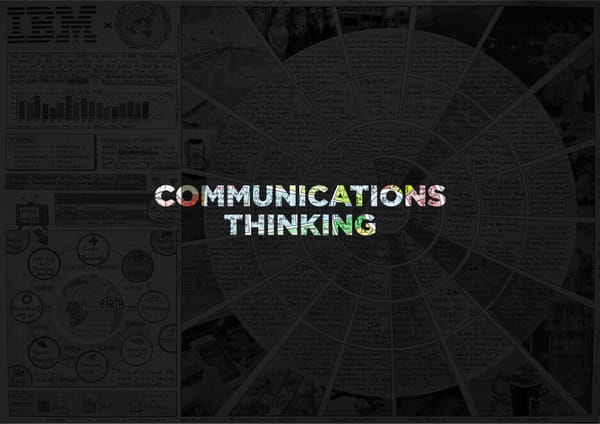
1+1=3 A good one pager can quickly take on a life of its own. Something magical happens. My thoughts make sense and I have more clarity than I did before. I understand a subject better and I become more connected to a topic that I previously didn’t knowmuchabout. The laws of math seem to go out of the window and 1+1 no longer equals 3. 1+1=2? That’s the grind. That happens every day and doesn’t inspire anyone. Get a pad. One. Grab your pencils. One. And you write a document. Two. Decks and documentsdon’tinspire anyone. But something else happens whenyoucraftagoodonepager. Giving yourself time to think with your pen often creates the environment where 1+1=3. You find yourself hit by inspiration, interesting ideas and visions you’ve not had before. Numbers turn into narratives. Presentations turn into performances. That’s the magical power of a good one pager and you can’t explain it. You have to do it and experience it for yourself. 1+1=3 is the essential equation of art. It’s also the essential equation of love. It’s what happens when a great band, a good orchestra or a group of dancers get together to create their art. Things take on a life of their own. I’ve stumbled across all kinds of interesting ideas via my one pagers and as you can see from a few of these images, some of them have evolved into keynotes, pitches, presentations and learning programmes.
Communications Thinking. “If you want to own something you need to name it”. Those wise words given to me as advice by New York Times columnist Tom Friedman were ringing in my ears when I was trying to come up with a system to help people tell better stories. I didn’t want to “own” anything (I’m a big believer in open-source and the community mindset of creating cool things and giving them away), but I knew that my system needed a name if it was going to be taken seriously and adopted. Communications Thinking was born from a few of the one pagers I worked on when I was studying design thinking. If design thinking is simply about problem solving by putting yourself in your customers shoe’s, what if “Communications Thinking” was just problem solving by putting yourself in the audience’s shoes? (I also liked that “thinking” was in the name because that word means a lot to IBM). What if communications thinking helped people to communicate more effectively when the stakes are high and attention spans are short. Mypurpose in creating this system was not to offer it as a luxury to executives who need to improve their “soft-skills”. Communications Thinking at its core is a really hard skill. Think of it like an industrial 1. SEEING 2. MAPPING framework for communicating effectively. At scale. When urgent outcomes are needed. When you need to tell a differentiated story, Story Canvas Purpose-Driven Story Map this framework will help you stand out. And for those times when you don’t have a unique story to tell but you’re communicating in a • What–do you want to say? (What is the big problem you are Designed for commercial storytelling during the sales process, this competitive environment, this framework will help you to tell a solving?) stage simplifies the complexity of your purpose-driven story by better story. And better stories create better outcomes. They turn • Who–are exactly are you trying to reach? (Which stakeholders do showing how you will deliver a measurable difference in 4 mission- numbers into narratives and bring even the driest of data-driven you need to win the hearts and minds of – or conquer?) critical areas. Have 8 (relevant) customer success stories always at stories to life. It’s a system I’ve used to help executives speak on • Competition – who are you up against and do you have an idea of hand for whatever story you are working on, to demonstrate how you global stages such as Davos, TED and SXSW. I’ve seen leaders use what their win themes / narrative might be? will help to drive just 4 things up and 4 things down. this framework to help with promotions, job interviews, podcasts, • Different – Why can’t any of your competitors use the narrative you keynotes, sales pitches and team meetings when everything is on are championing? DRIVE UP the line. I’ve even used it for school assemblies to speak to primary • Revenue & Profit: Where have you helped a client make financial school kids about climate change. Communications Thinking is • Why are you uniquely positioned? (Ethos) - Also: Why now? bets on securing the future while providing short term commercial broken down into 5 distinct stages known as SMUBA (Kairos) strength and stability? : Seeing. • Market Share: What relevant examples do you have where you have Mapping. Understanding. Believing. Acting. • PoV–What is your unique point of view? helped a client find ways to gain a competitive advantage that will • Mission? How is your mission aligned with the mission of this give the organization a dominant market position? 1. SEEINGis about collecting all the available stories and statistics (client) narrative? (Pathos) • Retention: where have you helped a client to increase retention by that will help turn data and numbers into narratives. This phase reducing (customer / employee / talent) churn, aligning culturally helps you to understand who your audience is. What challenges • Topic? Win theme / project name & outline and increasing employee, partner and client happiness ? dotheyface? Andwhatdotheyreally need? • Heroes? Customers, colleagues, communities? • Positive Change: How can you create a culture of activists & 2. MAPPING is about organising all that information into a • Stage? What is the venue / format of the presentation? (Can you evangelists that are purpose-driven to make a difference to people, meaningful map that will help us to tell our transformational make the venue or the presentation format part of the story? planet AND profits. story. Based upon what you learn from seeing, you begin your • Internal – What human stories are relevant to add empathy and journey (like any journey) by creating a map that focuses more emotion? DRIVE DOWN onwhattheaudiencewants, thanwhatthestoryteller wants. • Conflict? What cognitive biases or obstacles are standing in your • Costs: Example of driving down costs through effective cost- 3. UNDERSTANDING. With our map in hand, we are really to way? (Elephants in the room?) takeouts and operational costs savings that you could deliver faster • User stories? Evidence of success stories or user / employee / and safer than anyone else. understand what our audience wants. Understanding is the customer feedback that has given the evidence (logos) to shape • Time to Market: How have you helped a client drive down their time quest to understand why, and to become the trusted guide that your story to market by aligning Communications Thinking with other business helps the audience to navigate their difficult journey. UVP • : [Your company] is the only company that can _________ processes. 4. BELIEVING is all about inspiring the audience and giving them • Today’s world: SME / thought leadership / insights • Risk: Where have you driven down risk by reducing operational, the confidence that progress is possible. It’s about creating a • History: How legacy / history (not nostalgia) has helped to shape compliance, climate and financial risk to mitigate threats of vision based upon the what, the how and the why. The goal your story or align organisations production stoppage and damage to reputation. here is to connect with the beliefs and biases of your audience • Magic facts: Big memorable numbers? $X value unlocked / % • Environmental Impact: How can you align to sustainable in order to engage them in the way that wins their hearts and Faster time to market / #ROI realized within X years / $cost development goals to deliver a positive triple bottom line minds. reduction / #Risk reduction / #Increased NPS etc.. (people/planet/performance) that isn’t “green-washing” or just . ticking a CSR / ESG box? 5. ACTION The ultimate purpose of Communications Thinking is to create Action. It is to help you communicate in a way that delivers actionable and measurable outcomes by telling your story in a meaningful way. Andthereyou have it! Communications Thinking in a nutshell.
3. UNDERSTANDING 4. BELIEVING 5. ACTING Hero’s Transformation Journey Conversation Strategy Mission-Critical Story Script In 335BC Aristotle (the Greek god of Storytelling) wrote a short Einstein once said if you can’t explain something simply, in pamphlet called “Poetics”. Within those 62 pages he proposed a language that a barmaid could understand, then you don’t Act 1: Hero’s World [the situation] – What are 2-3 things to format that all plays should follow if they are to successfully understand it well enough. While not exactly the most politically excite the audience about this proposition? (Taken from column received by an audience. His premise was quite simple: correct language he had a point. The ability to simplify 1 of the hero’s journey stage). complexity is a special skill which many need but few have. The All good stories start with a hero who is going to embark on a conversation strategy is a powerful tool to help you do just that. Act 2: Problem [the complication] “BUT….” - Based upon our journey from A to B. The hero has to be transformed (for better It combines the previous three stages but encourages you to research / experience / thought leadership – DISTURB - why are and worse). It has to happen in the least possible number of distill your entire story onto one page. Intended to curate a we in this difficult position & why could it get much worse? The steps. It has to happen in one place (over 48 hours). And at the conversation and not to become a slide. worse the better – the bigger the contrast between act 1 & act 2 end we have to experience shock and awe or fear and pity. While the better – but base all reasoning on facts & evidence or a very our hero has to experience recognition & reversal of their This slide is split into six segments because when used correctly, thoughtful and battle-tested point of view. (Column 2 of the situation. you will have six different narratives behind each segment. (The hero’s journey stage). inspiration came from Jane Goodall’s one pager). What is remarkable about Aristotle’s Poetics, laid out here in a Act 3: Solution [the resolution] – Narrative from sections 4,5,6 of simple format that I learned from Donald Miller’s excellent book Imagine that the three segments on the left represent the more the hero’s journey stage to ASSURE the audience that only you Story Brand, is that thousands of years later it is still the format data-driven left part of your brain and their objective is to can get the job done and go above and beyond their that we use for storytelling. It’s where the three act structure inform, educate and solve a problem. And the three segments expectations, to deliver a successful outcome and build the originated from and it’s the format used for all good plays, on the right represent the creative part of your brain and their foundations for future partnership / growth… movies, books, TV shows and adverts. So whether you are telling job is to inspire, entertain and challenge the audience with your a story to entertain, to educate or to sell things, this format will unique and compelling point of view. S.T.A.R : Every talk will have 1 main thing that they remember. create the most positive response from your audience. ONE. What is the one thing you want the audience to take away When combined, this stage creates a conversation map to help and share with their colleagues later. This must not be in doubt Character: you deliver your message in a language that any audience will and clearly (and dramatically) articulated during the • Who is this story about – what do they want / why understand. It’s a template (not a slide to be shared presentation. do they want/ need it SO badly? with your Problem • : Internal (politics?) External (market disruption?) audience) but I promise you that it’s the most powerful part of Philosophical (purpose-driven?) Communications Thinking. The conversation strategy is the 4 Rhetorical Appeals • Guide : Empathy for the hero (client?) and why you have the engine that drives your message forward. The presentation needs to contain elements of each LOGOS / authority to be the trusted advisor on this journey ETHOS / PATHOS / KAIROS – this is likely to be a different Plan • : Your proposed project plan. While it is designed as a wheel to follow the hero’s journey, the weighting depending upon your audience / their seniority / • Action: Why this / why now? Urgency to act now. What’s the intention is to provide you with freedom to address any political views / geo / cultural considerations / desired cost of doing nothing / delaying? (Kairos) segment in any order, as long as by the end of the conversation outcomes. • Success : What will our transformed journey look / feel like? A you have covered every section. day in the life / customers shoes / user journey…. For best results write your script long hand if you have a fixed • Failure: If 85% of transformation journeys fail. What could time to keep to. Keep an eye on the specific word count. Bullet failure look like (and how do you avoid it?) points are good here but have a separate script to work from. “I wisely started with a map. Understanding life begins with understanding maps and patterns. Where patterns are broken, new worlds can emerge.” J.R.R.Tolkein
“You can have everything you want in life, if you just help enough other people get what they want.” Zig Ziglar Mystory… I am conscious of oversharing and I wasn’t going to include this bit of personal background in my collection of one pagers, but in retrospect it might provide a little context about what drives my obsession, and why I started to create one pagers in the first place. So here goes… Imposter syndrome is a funny thing. I’ve had it for most of my professional life and it’s pretty hard to shake it off. I graduated from college with pretty good grades and was accepted to City University in London to study investment banking. It sounded like the sensible thing to do, especially as I fancied myself as the next Gordon Gekko. But after a several debates with myself and my parents about whether or not greed was good, I decided to take the road less travelled instead. I chose to take control of my own destiny and pursue the exciting life of an entrepreneur, so I set off on a crusade determined to become the next Richard Branson or Anita Roddick. For the next few years I wrote and re-wrote my business plan. I read the Financial times every day! I had a photo of a Porsche 911 Carrera with a “Jeremy” licence plate above my desk and surrounded myself with books from great leaders such as Zig Ziglar, Tony Robbins, Tom Peters, Jim Collins and John Maxwell. I think I even owned a pair of Gekko-style red braces at one point! In search of my millions I first attempted to buy the family printing business. Then I set up a kids golf company. A skateboard clothing company. A food packaging design agency. And a branding consultancy. I was proud of all of them. Unfortunately this is not an inspirational tale of my personal success. I did not flirt with failure only to rise from the flames and become an award-winning entrepreneur. I did not appear on Dragon’s Den. I wasnotfeatured in Forbes, Fortune or the Wall Street Journal. I failed. Badly. And publicly. I lost my house. Marriage. Many of my “friends”. The design agency I had poured my life into. All my investments. Mybeloved John Cooper Works Mini was repossessed. I’m pretty sure I even lost my mind on more than one occasion... having only £10 to my name and being forced to decide between putting petrol in mycartodriving to a pitch, or buying bread and milk so that I could live on tea and toast for the rest of the week is an experience I don’t fancy revisiting. I had to complete some paper work for an internal move not too long ago and the form I needed to fill in asked me to use the additional lines to complete details of my second degree and which school I got my MBA from. I didn’t need those extra lines. I didn’t even need the line that came before it. No, choosing to bypass higher education in favour of the glamourous life of an entrepreneur was not my best decision. But here’s the thing...my decision to not extend my education for four years after college sparked a fire that has not gone out since I graduated and it doesn’t show signs of stopping anytime soon. I have an unquenchable desire to keep learning and a hunger to study from the past in order to create a better future. Maybe I’m just motivated to catch up with the executives who are far more academically qualified than me? Imposter syndrome… It’s a funny thing. It’s that weird feeling that you don’t quite fit in. But it’s also the fuel that creates the energy you need to survive. It’s what pushes you to try harder. Instead of worrying about the few things I didn’t study for the investment banking degree I never took, I have tried to study EVERYTHING! In his book Outliers, Malcolm Gladwell teased me with the idea that 10,000 hours of focused learning could propel me to the top 1% of my chosen field. I believed him and embraced his concept whole heartedly. In some ways, that book rescued me (or it at least rescued my brain with the promise of success at the end of a long dark tunnel). Gladwell’s book was released in 2008, the year my design agency collapsed, as well as a few other companies such as Lehman Brothers. It was a rough year. I now needed a new mountain to climb. My back-of-the-napkin maths estimated that if I was going to take a different route to scale to new heights, then 10,000 hours would be about 7 years if I spent up to 4 hours a day learning new things. In that moment I decided to dedicate my life to storytelling and to helping other people get better at telling their stories. Fast forward 7 years and we’re in 2015. I’ve learned to speed read. I’ve been an early investor in Masterclass.com and I’ve devoured every business strategy, communication, marketing and motivational book that I could get my hands on. I’ve worked at Facebook. I created one of the first social media teams in Europe for £1 billion telco retailer. That led me to the software company Adobe, where I helped to develop their go-to-market strategy for a new marketing cloud. Adobe opened the doors to Salesforce who were in the middle of buying ExactTarget for $2.5Bn to compete with Adobe. I was recruited to help them tell their story to CMOs and investors. And then came 2016. That was the year I was hired by the biggest tech company of them all, to tell stories about AI, blockchain, cloud and quantum computing. Today, I’m a communications designer for a 110-year old start-up called IBM. I draw stories, write speeches and help executives to communicate better. It’s a great job title because I invented it. IBM has never had a ”communications designer” before so I’m rather fond of it. Those two little words that speak volumes. Not just about what I do, but about where I’ve come from. I don’t think I’m a failure anymore. I don’t have imposter syndrome. And I’m quite proud of the fact that I’ve fought my way to the top without a degree! So what was it that made all the difference? Two things. One, I’ve never stopped learning. Two, I write every day (even when I don’t feel like it). d direct me towards pastures new? When I was diagnosed with ADHD one pagers WhenI first started to scribble my thoughts down onto large sheets of paper who knew that they would rescue me an helped me to make sense of my thoughts and process them better. And who knew that not only would my one pagers fill the void created by incomplete education, but they would help me to inspire entrepreneurs, business leaders and civil servants to become more successful? This book is a short collection of the things I’ve scribbled over the last few years, but they’re really rooted in what’s happened to me over the previous thirty. So please, feel free to view my notes and one pagers with idle curiosity, or the kind of pleasant voyeurism that you get when browsing through someone else’s journal. But don’t for a second think that these are just words on a page or pictures simply coloured in to pass the time and share on social media. To me, these are the words and ideas that helped to change my world. Not the world. Just my world. And who knows? Perhaps they’ll provide a little dose of inspiration or that kick up the ass to encourage you to change your world too...
Thankyou! Good artists copy, great artists steal. But they steal gracefully. And with attribution. This collection of one pagers was inspired by the speeches, stories, ideas and insights that I’ve collected from some wonderful people who I’ve met along the way. This is not an exhaustive list of friends and colleagues who have inspired me (you know who you are and I love you), this is a list of people whose content has been gracefully stolen for some of my one pagers. I encourage you to buy their books and devour out EVERYTHING that they’ve published! Today Matters will change your life. John Maxwell My mentor who teaches me how to be a better leader. Nancy Duarte My favourite person in the industry. Helped me to understand the shape of a purpose-driven story. Simon Sinek If I had hero's Simon would be one of them. The person I look to most often for inspiration and ideas. Carmine Gallo I love everything he’s ever written. From Talk Like TED to Five Stars. Austin Kleon “The writer who draws”. Taught me to think with my pen. Chris Anderson Forever grateful for what he’s built at TED. Jay Heinrichs Taught me ab out the power of persuasion Louis J. Prosperi His Disney books about Imagineering are superb. Michael Margolis Story 10X should be on everyone’s bookshelf. Tim Grover Michael Jordan’s personal trainer taught me about obsession and what a winning mindset really looks like. John Elkington Inspired me to make sure every commercial deal has a triple bottom line. Blake Snyder Author of Save the Cat! There’s a reason every screen writer owns a copy. Caroline Goyder Voice, performance and presentation coach. Hire her. Nick Morgan Can You Hear Me? Helped me to be a better virtual presenter during lockdown. Sam Leith The best book on Rhetoric and understanding what Aristotle really meant. And he’s funny. Death by PowerPoint”. All his TED talks are must-sees. David J.P. Phillips Mr. “ Jonathan Gottschall The storytellers storyteller. Jon Favreau Obama’s former speech writer. Subscribe to the Crooked Media podcasts! Peggy Noonan Reagan’s former speech writer. On Speaking Well is another of those essential books. Philip Collins Blair’s former speech writer. His book When They Go Low, We Go High is outstanding. Yvette Cooper She Speaks. One of the few books showcasing the best women communicators. Donald Miller Story Brand was the initial inspiration behind the Communications Thinking framework. Bob Goff Love Wins. It really does. Will Storr Helped me to understand the “science” of storytelling on a much deeper level. Thomas L. Friedman My favourite columnist from the NY Times. He has 3 Pulitzer Prizes for a reason. Kate Raworth The Queen of Doughnut Economics. Superb TED speaker, author and economist. Erica Chenoweth Taught me all about the 3.5% rule and how a small group of people can change the world. Gary Keller The ONE Thing. One of those books I have to re-read every few months. Katharine Hayhoe The best climate communicator out there who taught me how to tell stories that matter. Seth Godin The King of Marketing. He’s never written a word I didn’t like.. Biz Stone Co-Founder of Twitter who taught me that you can “Build a business, change the world and have fun”. Garry Kasparov Chess grandmaster who helped me to talk about AI in a much more human way. Martin Brooks Author of Body Language Decoder. I recommend him for workshops or as a drinking partner. Rob Bell Poet. Preacher. Philosopher. One of the best communication coaches out there. Ken Segall Steve Jobs creative director. Who constantly reminds me not to over complicate things. John-Paul Flintoff Watch his Athens TEDx talk on changing the world and then go buy his books. Lisa Cron Wired For Story made me realise why the first sentence is EVERYTHING. Neil DeGrasse Tyson My favourite Masterclass host and probably the best dinner party guest anyone could ever have. Finally, much thanks to David Rogier for founding Masterclass.com (I have been obsessed since the platform was launched in May 2015 and it remains one of the few places I go to learn new things every day).
